











































volume fourteen, issue two
Dear Reader,
ank you for picking up your copy of e Yard’s “Creation” issue!
Here we are old friend; you and I on the first page of my last issue with CisternYard News. It has taken three years to get here and throughout that time I have encountered so many people to thank.
To begin, I would like to extend my thanks to the CisternYard Media team: Melissa, Zina, Ethan, Chase and Addison. Our time in the CYM office has filled me with so much joy and inspiration and I am honored to call all of you friends.
ank you to my incredible staff. Julia, my Managing Editor who I always can rely to lean upon for support. Cora, our talented Creative Director who never ceases to amaze me with her talent and light. Caz, you have grown so much as a person and a writer since I first met you when you came to the College; you are one of the kindest people I know. Charlotte, you are such a joy to be around and your creativity is unmatched. I would not be able to have accomplished any of this without you and you are all truly the best staff I could ever ask for!
To our wonderful volunteers; old and new, thank you for your dedication and faith in CisternYard. Getting to watch all of you grow and form connections is the reason for all of this.
ank you to my loved ones: My grandparents, Donna and Dan McGehee who have always been willing to impart their wisdom on me and offer advice when I need it most. My best friend, Ellie Odom who is always there to supply me with laughter and light in my darkest moments.To my mother, Charlotte Rhett; you have always supported me in everything I have ever done and you believe in me more than I believe in myself. I know
even when I feel lost and alone you will always be there for me
And finally, thank you to you; dear reader. Your support of e Yard has allowed me and countless others to be able to do what we love and be our truest selves.
When I think of CisternYard Media as an organization and all of its subsets, the word that always comes to mind is without a doubt, “creation”. CisternYard Media has always been an organization that sets out to support any and all of its members; welcoming them with open arms and fostering their craft and creativity.
My time with the organization has curated some of the happiest moments of my time at College of Charleston and the love and support I have found here is unmatched. CisternYard Media has made me a better writer, a better leader and a better person. I am forever grateful for this opportunity and it has changed my life for the better.
ank you to CisternYard Media, CisternYard News and e Yard for giving me a place to grow. I know myself and everyone involved in the organization will always have a place here.
For one last time: All my love and until next time,

Blakesley Rhett CYN Editor-in-Chief 2024-2025





Pg. 12 - Renovation and Reopening of the Simons Center for the Arts
Pg. 38 - Talk Flowers to Me
Pg. 32 - Cougar Involvement: Amnesty International
Pg. 81 - Driving Change on Campus: An Interview with College of Charleston’s Student Body President and Vice President
Pg. 98 - CisternYard Radio Playlist




























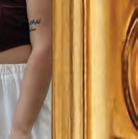









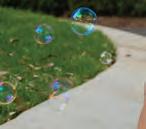












Rhett Editor - in - Chief



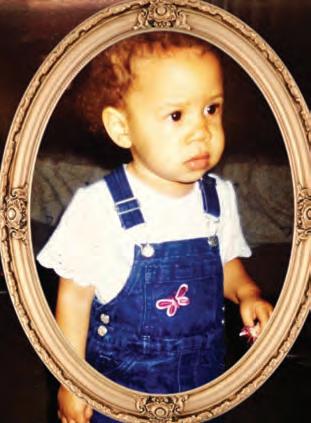




























Cora Dvorovy Creative Director

















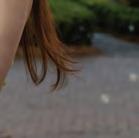






Julia Bianchini Managing Editor





































Caz Kopf Features Editor










































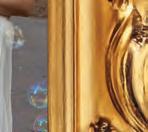









A oss
1. riller TV show starring Melanie Lynskey and Sophie atcher
7. Site of the 2026 Winter Olympics
8. Flower representing innocence
11. Current President of the College of Charleston
12. Book of maps
14. Nest of a large bird high up off the ground
15. Person worshipped or admired
16. Fran Fine’s occupation
17. Goddess of Witchcraft and Liminal Spaces
18. Historic theater on George St.
22. Era centered around new ideas and rebirth
24. Domesticated songbird often used in the mines
25. Last name of the main sisters in Little Women
28. Sabrina’s talking cat
31. English team game played with oval-shaped ball
32. Cards used for fortune telling
34. Home to CisternYard Media
36. Largest NYC borough
37. Critically bad move in chess
38. Number of wives Henry VII had Down
2. Epic poem by Homer
3. Famous patron saint of France
4. Name of princess third in line to the English rone
5. Wife of founding father on the $10 bill
6. Title of a member of activist women’s organization in early 20th century
7. CisternYard Media’s literary magazine
9. Oldest city in South Carolina
10. Main fairy in A Midsummer Night’s Dream
13. Mix of blue and green
19. Russian king
20. Mother of Dragons
21. Brief; using few words
23. Protagonist in Orwell’s Animal Farm
26. Swedish pop group; best known for Mamma Mia!
27. Movie featuring the quote “As if!”
29. Virginan flying cryptid
30. Bones protecting organs such as the heart and lungs
33. Referred to as the “Eternal City”
35. Symbol associated with the Goddess Athena




Olivia Lytle


Sarah Neal



Jack Simon


Jay
Ward
Michael
Sarah
Biondo
Neal Camryn Clark
Clare Foster

Photographer: Malia Henry
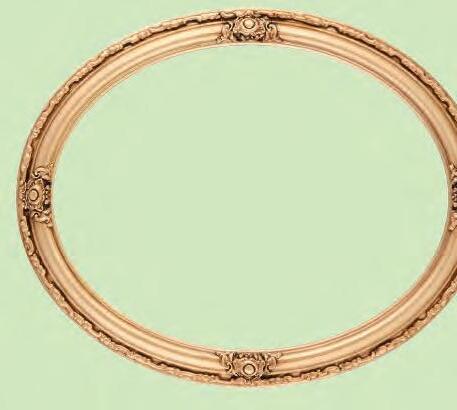
Photographers:
Malia Henry
Narrative Photoshoot
Photographers:






Charlotte Ottaiano
Jack Jemison
Katie Steffke
Margaret Mower
Models:
Sophie Weinberger
Jacqueline Jevtich
Casey Riley
August Soto
Sydnie Capriola
Gabrielle Angeles
Isabelle Quade


Models: Isabelle Quade




By: Blakesley Rhett
Art has always been at the epicenter of the city of Charleston, so it is no surprise that the College of Charleston takes such pride in the artistic endeavors of their students, staff and alumni. For many people, art in its many forms is considered a way of self-expression and communication which is why it holds such importance to so many people, including members of the College of Charleston.
46 years ago, The Albert Simons Center for the Arts opened its doors to students at the College in 1979 and quickly became a vital operation to the College of Charleston’s School of the Arts. For over 40 years, the Simons Center welcomed students through its doors to provide education and experience across fields such as dance, music and studio art.
Throughout its time, the original building became
a community space for anyone involved in the Arts Department. College of Charleston Alumni Whitney Green, who graduated in Spring 2024 with an Arts Management Major, explained to me; “The original Simons Center was the first place on campus that really felt like home. Coming in as a freshman during Covid, opportunities for in-person experiences were limited. Being asked to choreograph for a theatre revue brought me into the Black Box for rehearsals almost daily. Simons soon became my favorite study spot on campus. Not just because of the home-like feeling of the exposed brick walls and old-school atmosphere, but because of the community aspect. Each time I studied there I would run into so many friends coming and going from rehearsals or classes.”
The Simons Center was originally built to house up to 800 students, but as the Arts Department at the

College grew it became increasingly apparent that the building would need to be expanded. That’s why beginning in Fall of 2021 the Simons Center closed its doors and began renovations with the goal of re-opening in the Fall 2023 though setbacks in construction would not have the building ready to open until Fall 2024.
Over the course of three years, the Simons Center took on a mass renovation with over 10,000 square feet being demolished and 22,871 square feet being added onto the building. The plans for the reno-
vations boasted a new two-story black box theater complete with a lighting and sound booth, additional seminar classrooms, state of the art costume and set design workshops, refurbished seating in both the Recital Hall and the Emmett Robinson Theatre along with upgraded sustainable technology such as motion sensor lights and the building’s own
independent energy plant.
“
years.
Green explained how the displacement of the Arts Department classes affected herself and her classmates, “Having Simons center closed for renovations then shifted where I was to look for that sense of community. My major, Arts Management, moved most classes to Harbor Walk. This made it challenging to find a sense of community when the classes were so far away from the main campus. Furthermore, it was difficult to make Harbor Walk feel like a home for Arts Management since it was
The re ing of the Sim s C t shows us stud ts that the ts e imp t t to The Co ege, as we as s - p ted. The S ool of the Arts is ‘the tistic he tbeat of Ch lest ’, d now we have new p t ities to express o selves in new ways.”
While the construction took place, classes and productions that would typically be housed within the Simons Center were housed in different campus locations. Harbor Walk became the host of many Arts Management and Music classes, Calhoun Annex now held the Theatre and Dance Design Studio and the Costume Shop was moved to a historical building right off of King Street. The loss of both the Recital Hall and the Emmett Robinson Theatre meant that productions put on by the department had to be held in different spaces, with many recitals, musicals and showcases taking place in the historic Sottile Theatre over the past two
always a temporary/ transitional space for us. I initially decided to wait to complete some of my arts management courses until the renovation was done so I could take these classes in the new building. However, the construction went on longer than anticipated which caused me to make more trips to Harbor Walk than anticipated. Although I didn’t
get to experience the new space while in school, I know that this space will serve as a hub of creativity, innovation and community for years to come.”
After months of work, the upgraded Simons Center for the Arts was soft-opened on May 3, 2024 and beginning in the fall semester, students were allowed to once again walk through its doors.
Even though the original opening date was set back a year, there was still much work to be completed between when the Simons Center reopened and when it could be officially declared as finished. Throughout the Fall 2024 semester there were a series of construction workers throughout the
building, bringing in chairs, finishing painting, updating wiring, adding lights to the Black Box Theatre and installing ceiling tiles. So much work was still taking place during the semester that the Department of Theatre and Dance production of Dracula, which was slated to be held in the upgraded Emmett Robinson Theatre, was instead held in the Black Box.
Despite the work that still needs to be done to complete the building, students are thrilled that the Simons Center for the Arts is finally available to be used again.
Sophomore Mira Zimmerman, a class of 2027 double major in Marine Biology and Theatre Studies who has become accustomed to the new design spaces such as the costume shop stated that, “As someone who has just started to become more involved with the arts department here, the opening of the new Simons has been so exciting! I think as a theatre major it’s really important to get experience in all different types of spaces and media, which is why the Simons center has been such a welcome expansion. Having both the Emmet and the Black Box allows for so much more versatility in all aspects of theatre. Arts is such a broad term and some of the needs can be so specific, but I feel like the Simons Center really provides the resources necessary for all different kinds of arts education. It’s also really beneficial just from a logistical perspective; with the thriving arts scene here, like Center Stage, Charleston Opera and Dance Alliance, it’s just very practically useful to have more rehearsal and performance space.”
Halle White, a class of 2025 double major in Arts Management and Dance with a concentration in Performance Choreography, is excited about the sense of community that is rebuilding within the updated space. White stated, “With the reopening of the Simons Center of the Arts, I am reminded of the community within the Department as I walk the halls and am able to see the people who work to make this experience the best for me every day. There is something truly special about the closeknit student body within the Department and I am grateful for the building that brings us even closer
together.”
Although there is still work to be completed before the Simons Center for the Arts can be declared fully finished, students and staff are excited for all the opportunities for art to grow in this new-yet-familiar space.
“The reopening of the Simons Center shows us students that the arts are important to The College, as well as supported.” Hayden Cohen, a class of 2026 Theatre major with a concentration in Youth Theatre, noted, “The School of the Arts is ‘the artistic heartbeat of Charleston’, and now we have new opportunities to express ourselves in new ways.”




From Frida Kahlo to Julia Fox, the term “Muse” has been applied to many. A muse is a spirit of creation, a being that gives inspiration. Whether a person, place or thing, this force of artistic spark burns in many places. An elusive holy ghost that we hunt to speak through us. Torches of the arts, science and literature. Born from the king of gods and the goddess of memory. She does not respond to force and comes when we are best t to receive her. A giving thing, she lives in song and color.
e rst image we have of e Muse is the nine muses of Greek mythology. ese goddess sisters are depicted throughout Greek art and stories. e tale of the muses says they lived in Mount Helicon under rule of the god Apollo. ey were born from the torrid nine day love a air of Mnemosyne and Zeus, and were named Clio, Calliope, Melpomene, Erato, Polyhymnia, Urania, alia, Euterpe and Terpsichore. e sisters were accredited with the creation of Greek culture through the artists, inventors and scientists of the time. ey were said to inspire Sappho and Homer in their epic works. Each sister focused on a certain eld of the arts and sciences and people would pray and make o erings to the goddesses for divine inspiration and guidance. e muses were also the keepers of








By: Niamh Nixon
the Hippocrene, a sacred spring told to imbue poetic inspiration to those who drank it.
Today we see the Muse as a more singular force and o en associate the term with a person; typically a woman. A person with some mystical ethereal quality that demands to be captured, and dares you to understand it. Human muses possess a quality of allure and otherworldliness, as if untouched by mortality. ey can be seen as a chosen vessel for the more ethereal spirit of the goddess muse. Many artists throughout history had muses that they would capture over and over again in paintings and songs. In one of my favorite paintings, John Millais’s “Ophelia”, his muse Elizabeth Siddal laid for ve hours in a cold bath to emulate the tragic character and contracted pneumonia that almost killed her. Pablo Picasso was known to have multiple muses including Dora Maar and Marie- erese whom he depicted in many paintings, o en xating on their hair. is tradition continues in a more modern fashion especially in music with artists like Patti Smith and Robert Maplethorpe or Joan Baez and Bob Dylan. ese artists became obsessed with each other in a way beyond romance. ey wrote countless songs about one another o en in response. And through art they become immortalized.
So how do we invoke e Muse? While we can’t expect Calliope herself to deliver us a divine chalice of creativity from her magic fountain, the spirit of e Muse lives all around us and calls out for us to nd her and bring her to life. e Muse resides in our very soul and can be brought to the surface. It

can live in people, places, things, and memories. Mother Nature herself is a powerful carrier of e Muse. e Sun, stars, Moon and the ocean herself have been great sources of inspiration for many artists. Monet’s series of water lilies shows a famed obsession with the elusiveness of light, possessiveness of water and the delicateness of the owers. e poet Gerald Hopkins was entranced by nature, and writes it into new life with a spirit of awe. His poem “Pied Beauty” is essentially an ode to the dappled colors of nature’s paint brush. Earth itself holds such a mysterious balance that many artists feel irresistibly drawn to. Finding e Muse in the sublime of chaotic Earth, we can ask the trees for stories and the sun for songs.
Gratitude is a crucial aspect of cultivating a relationship with your muse. Inspiration is her gi , and one that must be used. We can show appreciation for inspiration through consistently creating and listening to her whispers of inspiration. Neglect of creative drive is a dangerous thing in terms of the muse as she may leave you and need to be found again.






e Muse is undeniable. at spirit of irresistible possession that drives to create here and now, that feeling of “I gotta”. We talk about ow state and losing yourself in the creative process, a complete takeover of passion and inspiration in both mind and body. We can look at the ow state through the framework of e Muse. Almost like a haunting ghost that longs for life through possession, and whispers in your ear to be free, she opens the proverbial door to the ow state and dances you through it like a child waltzing on the toes of a parent.

By: Blakesley Rhett
Since the dawn of humankind, people have always loved storytelling. Perhaps evolving from times of telling stories around the fire, live theater has always been a form of entertainment in any society; from retellings of Shakespeare’s best works on stage to watching your younger siblings tumble through a junior production of a Disney musical.
But why are people drawn to live theater and musicals? Is it the flashy costumes or the operatic notes? Does tap dancing onstage make one want to try their hands at performing wings or time-steps? What has been the infatuation with musicals that has helped the live theater industry stay prominent over the past several decades and what made Hollywood so interested in turning these stage shows into blockbuster hits?
e First Musical Era took place between the 1930s and 1950s beginning with Walt Disney’s first animated feature film, Snow White and the Seven Dwarves, which ended up scoring an honorary Oscar at the 11th annual Academy Awards. e genre then turned to take a focus on live action musicals such as e Wizard of Oz, Singing in the Rain and Guys and Dolls which saw musical stars such as Judy Garland, Gene Kelly and Mickey Rooney

becoming household names.
e often-dubbed Golden Age of Movie Musicals began in the 1960s introducing classics such as e Sound of Music, West Side Story, Gypsy, e Music Man and Bye, Bye Birdie. ese movie musicals often took the route of directly adapting the stage musical so it could be produced for film, often keeping the exact same score and script in the transition. At some point in the 1970s, producers began exchanging original songs in their movies for popular rock and pop songs in an effort to better sell soundtracks, perhaps due to the box office failure of e Rocky Horror Picture Show (which would later become a cult classic due to its midnight showings). e 1980s and 1990s made way for movie musicals again with hits such as Annie, Newsies, Evita and Little Shop of Horrors while Disney expanded the musical market to children with its animated musicals such as e Little Mermaid and Beauty and the Beast.
roughout the 2000s the number of movie musicals lessened, perhaps due to the recession of the 2010s that impacted both the live theater and film industries, although musical adaptations such as Chicago, Moulin Rouge and Les Misérables found success at the Golden Globe Awards. One interesting trend that peaked during this era was the success of jukebox musicals, musicals that include radio hits by famous artists such as Mamma Mia whose soundtrack was solely made up of ABBA songs.
In the early 2010s it became apparent that mov-
ie musicals were being premiered less frequently. Most of the movie musicals at this time were created by the Walt Disney Company either in animated form or in live action series such as High School Musical and Descendants. To the public it appeared that musicals were now more for children and were becoming less mainstream. However, during this time Hollywood found success in their own original movie musicals such as La La Land and e Greatest Showman which appealed to theater lovers along with the general public.
e true rebirth of movie musicals and public interest in live theater came in 2015 when Lin Manuel Miranda’s sung-through biographical musical centered around an American founding father, Hamilton, took the world by storm. Miranda had brainstormed the idea for a musical centered around Alexander Hamilton after reading a biography about him while he was performing in his Broadway show, In the Heights. In 2009 when invited to perform at the White House for his work on In e Heights, Miranda performed what would later become the opening number of the show which explained Hamilton’s youth before he came to America.
e show opened off-Broadway in January of 2015 where its run was extended twice before closing on May 3. e show then made its way to Broadway (at a much quicker pace than usual) where it officially opened on August 16, 2015; only eight months after its world premiere. e original cast recording of the full album was released in September of 2015 which kickstarted its cultural impact. While many Broadway shows became well-known within the theater community, Hamilton was the first to branch into becoming a household name to all of the public. e show was everywhere, being talked about on news and late night TV shows, the album being downloaded thousands of times and the Broadway show selling out every night into the next year. People became enthralled with the music which combined rap and R&B and how it was being used as a tool to explain the life and times of a historical figure. e show went on to win 11 Tony Awards and received
the 2016 Pulitzer Prize for Drama. A professionally filmed version of the show featuring the original Broadway cast was released on Disney+ in 2020 which led to even more universal interest in the show and musical theater as a whole.
Although not as popular as Hamilton, another musical that made headlines in the public eye was Six, which first premiered in London on the West End in early 2019. Six the musical is written in the style of a pop concert where each of Henry VII’s six wives: Catherine of Aragon, Anne Boleyn, Jane Seymour, Anne of Cleves, Katherine Howard and Catherine Parr compete to see who suffered the most at the hands of their shared husband. e musical made public notice when the creative team made a decision to allow the audience to film the final song of the show (filming is often strictly prohibited in any live theater performance) and clips of the show drew great interest on TikTok. e musical is praised for its all female cast along with how it provides a feminist take by sharing the stories of historical female figures who are often overlooked.


Spurned on by the mainstream success of musicals such as Hamilton and Six, Hollywood decided to try its hand once again at movie musicals but feared that the public would not buy tickets to see what they knew was a movie musical. To address this issue Hollywood began to not market these films as movie musicals (even though they fit that category). Two films released without this moniker were Wonka, meant to serve as a prequel to Charlie and the Chocolate Factory that detailed how Willy Wonka rose to fame, and Mean Girls, a film version of the Broadway musical based upon Tina Fey’s 2004 film. In the trailers and advertising of these movies, clips of any musical numbers were not shown, making it appear to anyone who was not familiar with the Broadway shows the movies were based upon that the movies did not have any singing or dancing. When it came time that ticket buyers sat down to see these films in theaters they were very confused that they had purchased tickets to a movie musical after all.
After the backlash of the false marketing of Wonka and Mean Girls, Hollywood decided that they would continue on with the resurgence of movie musicals and market them as such. Soon streaming
services and theaters began showcasing film adaptations of musicals such the remake of West Side Story which launched Rachel Zegler to fame, Matilda which premiered on Netflix along with Tick Tick Boom which told the story of Jonathon Larson the creator of Rent, Mamma Mia 2 and most current of them all: Wicked.
Wicked was perhaps the most ambitious of them all as many people were not familiar with the musical or the book in which the film follows that depicts the story of the Wicked Witch of the West and her friendship with Glinda the Good. e film stars former child star and pop singer, Ariana Grande, as one of the main characters Glinda (formerly known as “Galinda”), which caused many people to wonder if Grande was suitable for the role. ere was also questioning why the film was split into two parts, both with run times close to three hours, when the original stage show was only two and a half hours. Despite all of this, Wicked: Part 1 was a box office success, bringing in $700 million worldwide and making it the second highest grossing movie based off of a Broadway musical behind Chicago which released in 2002.
e rise, fall and re-rise of movie musicals begs the question: what makes movie musicals so popular?
Many cite that people believe movie musicals can often be enjoyed by any ages, including families (not including the more graphic or raunchy musicals such as Rent and Sweeny Todd: e Demon Barber of Fleet Street) due to their catchy songs and flashy dance numbers that help keep the audience’s attention. It can also be argued that musicals are easy material to adapt to film due to the pre-made scripts and scores which is often required in a modern day film industry that relies on adaptings, reboots, prequels and sequels over original films. Most notably, for the majority of people, movie adaptations of musicals are much easier to access than seeing a show live. eater-going has often been described as a “high class” hobby with many professional theater shows often having ticket prices ranging from $75 to $200 depending on seat selection. For many families, having to drive to
a theater to see a two hour show is not worth the price and it is much more cost effective to watch the movie adaptation on a streaming service.
While the rise in movie musicals is doing wonders for Hollywood, we also have to consider how it is impacting the heart of musicals as well: the live theater industry. While the rise of movie musicals has been directly correlated with a public-wide rise in interest in musicals, that does not equate to more ticket sales to see live shows. In fact, the end of the 2024 season has hit Broadway hard, with many theaters going dark in the last few months of 2024 and early 2025. One example of this is Tammy Faye, a musical by Elton John based on the life of TV evangelist Tammy Faye Messner. Tammy Faye initially ran on the West End, but upon its transfer to Broadway it did not find similar success and announced its closing due to low ticket sales only a week after the show had opened; running on Broadway for less than a month. Another musical that struggled to sell enough tickets is Su s, a musical that tells the story of lesser-known leaders of the suffragette movement such as Ida B. Wells and Alice Paul. Even though the show opened in March of 2024 and won two Tony awards, the musical was set to close in early January 2025.
swing and alternate roles are all set in place in case a principal (the main actor who plays the role) is unable to perform in the case of a vacation, illness or injury. Often alternates, swings and understudies learn multiple roles in the same show and have to be prepared to step onstage at any time in the case of an emergency. e fact the understudies, alternates and swings are being recognized more by the public has sparked important topics surrounding pay discrepancies as well.
e partnership between the live theater and Hollywood industries has been somewhat of a tricky balance to maintain a mutually beneficial relationship for both industries, but when they are able to work together it can transport viewers to new magical and original stories. As long as audiences are drawn to the flashiness and storytelling of musicals, it has become clear that the movie musical genre will continue to grow throughout the years.

However, the rise of movie musicals has also helped promote important change in the live theater industry. Due to increased interest in musicals such as Wicked and Six, there has been an increased focus on supporting understudies, alternates and swings. To gain a better understanding why it is important that these roles are recognized, it is important to understand what they are. Understudy,
By: Julia Bianchini
In an effort to live a more sustainable life, people are often mindful of what the food they eat looks like. They choose biodegradable packaging over plastic, they sub Ziplock bags and Cling Wrap with reusable tupperware and overall make a conscious choice to find a recyclable packaging option when available. People have started to make more environmentally friendly choices in the types of food they are buying, but often this food still ends up going uneaten and thrown away. In the United States, currently about 40% of all food produced is wasted, ending up in our landfills. This waste contributes to harmful greenhouse gasses and has an overall negative impact on the environment. At the same time, approximately 47 million Americans experience food insecurity and are unaware of where their next meal will come from. To combat both of these important issues, food recycling programs, apps and organizations are being founded, creating systems to get food out of landfills and into the hands of the people who need it. These programs work with local communities, impacting restaurants, farmers and food producers, as well as their customers. In these systems, there is mutual benefit for the companies who are able to reduce their waste while still making a profit and for the customers who get access to the same high quality food at a discounted price.
The next time you are looking for a cost saving hack, trying to be mindful about your environmental impact, or are simply just hungry, maybe consider trying out one of these programs.
The Goodie Bag app is an innovative food recycling program that focuses on redistributing food waste from restaurants to customers. The app was developed by three college students at CU Boulder in 2023, after they saw a connection between the ever growing food waste problem and the need of college students for affordable food options. They were able to work with several local eateries in the Boulder area to provide college students’ meals at reduced prices.


The app has since expanded to several other cities, where it continues to work with local restaurants, cafes and grocery stores to give them a sustainable way to dispose of excess food that is not sold during the day. The connection with the local community provides mutual benefit for all. The participating businesses can still make a profit on food that would have otherwise been thrown away, customers can access the stores’ products at reduced prices so they are able to support the local community while staying on budget, and the creators of the app are able to combat the issue of food waste. The idea for the Goodie Bag App was born from the realization that the majority of food disposed of by these restaurants is still perfectly fine to consume. The app creates a bridge between businesses with excess food and people who can benefit from it. Users can browse available food items, claim them through the app and pick them up at a fraction of the original cost—turning potential waste into a resource for those who need it most.
The Misfit Markets program is dedicated to reducing food waste by reusing “misfit” or imperfect produce or panty items that would otherwise go unsold or be discarded. The program works with farmers, wholesalers and food suppliers to source produce that doesn’t meet standard cosmetic criteria for grocery stores, but is still perfectly good to eat. These imperfect goods could be smaller or larger than average, possess small dents or bruises, or have small packaging blemishes, all of which allow the product to be safe for consumption. These so-called “misfits” are sold through a subscription service. There is a weekly shopping window for customers where they can find the products available that week and then the Misfit Markets team will box up and deliver the groceries to customers’ doors.
Launched in 2018, Misfit Markets was born from the understanding that a significant amount of food is wasted simply because it doesn’t look perfect, even though it’s still nutritious and edible. By providing an outlet for this surplus, Misfit Markets helps businesses cut down on waste while making healthy food more accessible and affordable. The program allows farmers and food suppliers to sell produce that may have blemishes, be odd shapes or sizes and would otherwise go to landfills, making a positive impact on the food waste crisis.

This program is similar to Misfit Markets’ mission as they aim to “rescue” imperfect and surplus produce from ending up in landfills and contributing to the food waste epidemic. The company was founded in 2014 by a college entrepreneur at the University of Maryland who later brought his startup to Shark Tank. Hungry Harvest focuses on rescuing “imperfect” or surplus produce, like fruits and vegetables that are perfectly good to eat but are typically rejected by grocery stores due to minor imperfections or overproduction. Hungry Harvest partners with farmers, wholesalers and food distributors to source this produce, diverting it from landfills and selling it to consumers through a subscription-based delivery service. By sourcing surplus produce, the program addresses two major issues at once—food waste and food insecurity. The farmers and producers that partner with Hungry Harvest are able to make a profit on goods that would have otherwise been thrown away and customers have access to fresh, healthy food that could have been otherwise inaccessible. For the food that is not used to fill customer orders, the company donates leftover food to nonprofit organizations, like Feeding America to continue their impact.

The company’s success has continued to grow since its founding in 2014 and they have been able to save and resell over 27 million pounds of produce to date.


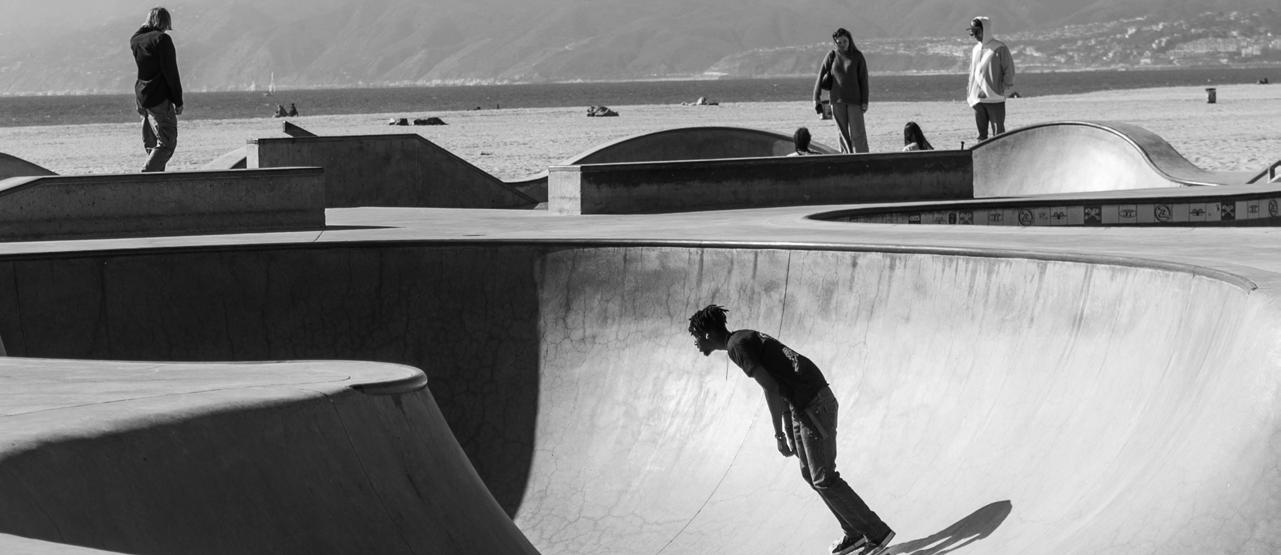
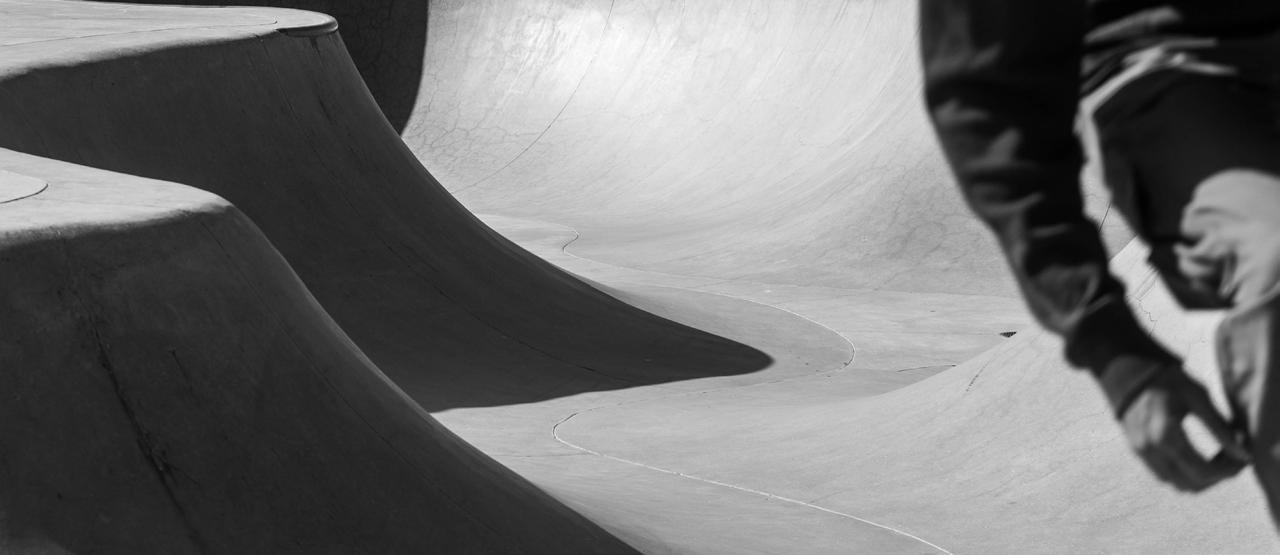
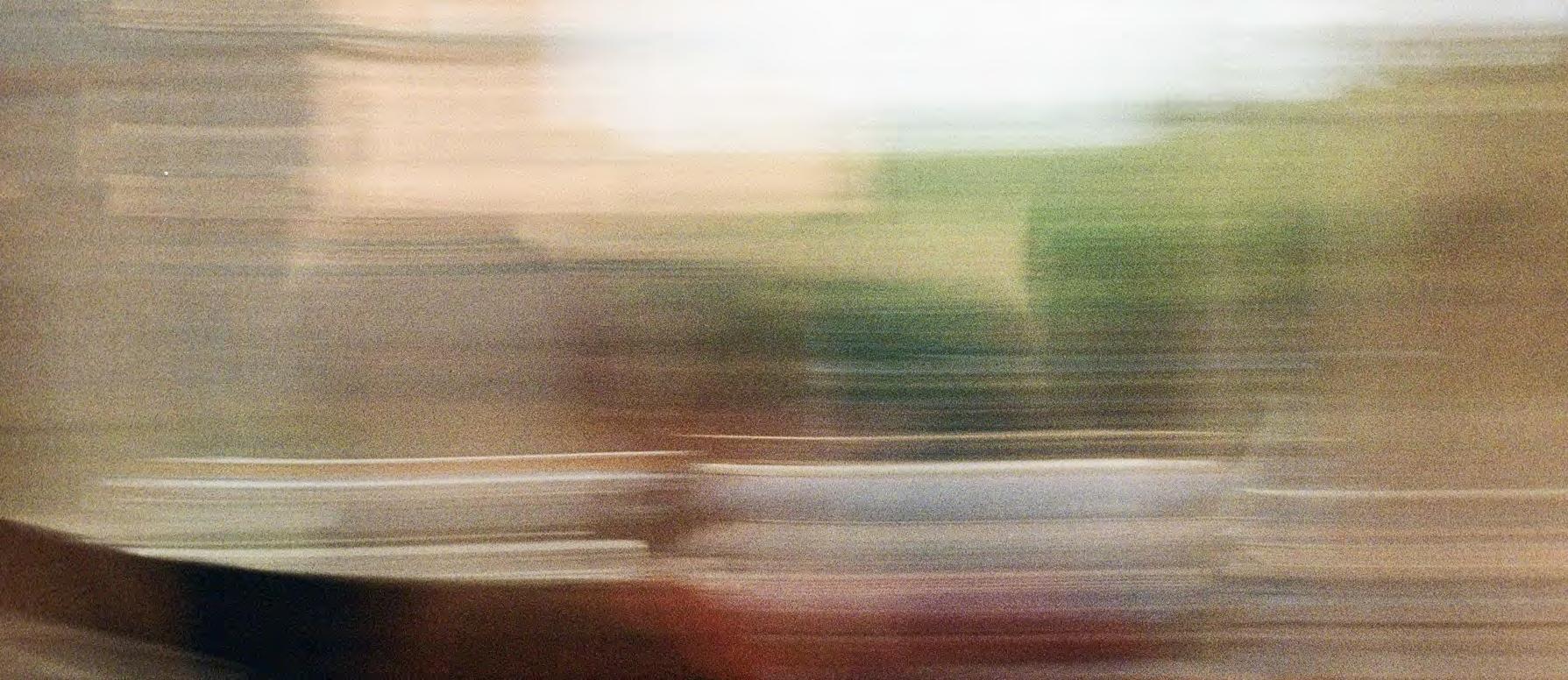





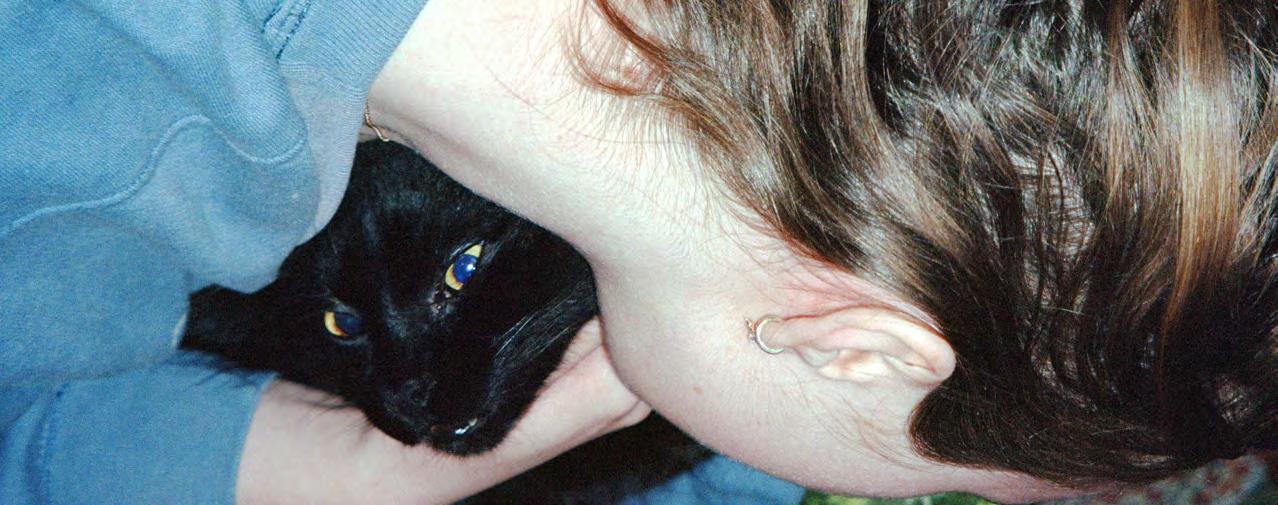





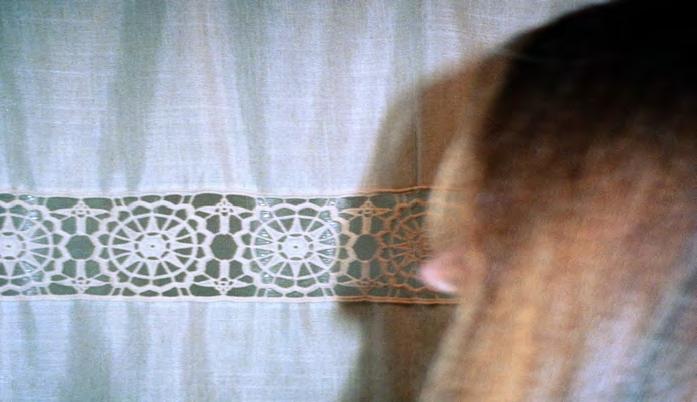























By: Olivia Lytle

I was once asked the question, “Where does language end?” I’ve been pondering it ever since, only returning to the thought when I find myself uselessly trying to grasp concepts that remain just beyond my full understanding. But I’ve recently realized that exploring this question is far from useless and that it is indeed worthy of an answer, especially during such perilous times as the ones we live in today. Connection warrants language and connection is the ultimate goal of the human species. is desire is programmed into our very base instincts and allows us to transcend the barriers of human limitation. Its acquisition is the impetus for the vastly globalized world we currently live in. If language is at the forefront of connection, how might we still accomplish it when language ends, or if it ends?
To begin to answer this, we must first consider, what is language? Language has been the defining connector of the human species since the dawn of the Homo sapien, and perhaps even long before. e ability to process and convey language is often pointed to as the key distinguisher between the Homo sapien and other, “lesser” species, although it must be noted that other animals, too, communicate, and therefore share a language amongst themselves. One could even argue that technology, particularly artificial intelligence, has a language that processes similarly to the ones humans employ as it utilizes the patterns of word usage to generate coherent sentences. For my purposes, however, language is innately human, as it derives from the mind and can be transmuted within the species. I would define language as the forever growing, forever adapting, and forever living connection of ideas. I do not see language within the strict guidelines as it is commonly defined but rather understand it as
a process that allows for the ideas of the mind to be coherently understood by those outside of it.
Now, we must understand where language exists. By where, I mean I want to understand if language is solely a mental process or if it exists outside of the mind. Language is inherently nonphysical and it cannot accurately be understood by anything other than the human mind. One might point to any written language, perhaps even the earliest recorded cave drawings of the ice age, and say that there exists comprehensive, physical language. However, there is still the pivotal action of processing language which occurs solely within the mind. Language is understood, however, through every human’s individual senses, and is then imparted on another human’s senses. is means that there exists a space between distinct human minds where language is transferred. When speaking to another person, one imparts their language, which is then transferred into this in-between space that is then understood through the senses of another person. One might imagine this process of language as a pendulum, as minds are forever acting on the actual output of comprehensible language. is not only means that language exists both inside and outside of the mind, but also that there exists a space in between where the two might coexist. I believe that the space in between is pivotal to the question of where language ends as it posits the idea that the process of language is somewhat infinite.
Because language is an infinite process, it becomes challenging to identify a specific endpoint. Yet, I often find my thoughts and speech hindered by some unforeseen force. It’s that sensation when you’re at a party with maybe 30 or 40 people, stuck in a corner








of your own choosing. 12 different faces float before you, blending together until they become one while also being everything and nothing at once, and you simply have nothing to say. Is this where language ends, in this uncomfortable mental incarceration of silence? e part of my mind that acts like a pendulum lacks the force to engage with the next force, so does language ultimately end within the mind? I would argue that the very act of understanding this within one’s mind constitutes a language in itself, if we view the pendulum as influenced by oneself from within. I believe every mental process is a language in itself, such as synaptic transmissions or even how light travels through the eye to form an image. I’m not entirely devoid of thought when I have nothing to say; rather, I am overwhelmed by it, and this too is language. Language can exist entirely within us and is, therefore, eternal. It cannot end with misunderstanding, nor can it cease to exist even when one cannot speak. So, when I’m caught in such mental blocks and cannot articulate my thoughts, I often remind myself that my mind is a process, and that the language occurring within it is just as valuable as the one that can be attained by others.
So, I conclude that language has no end. Its immortality is the reason that we, as humans, can understand even the most incomprehensible of ideas and bridge the gaps between minds. I find this question so compelling for what it tells us of our culture as, even in the most disparate of times, there might be something between each of us that remains eternally true. is understanding allows for the connection of the human race, and the ability to recognize every mind as you would your own, friend or foe. Language is a beautiful thing with limitless possibilities, and I believe its eternal nature is what keeps humans so profoundly interconnected.









By: Audrey Palmadessa

There are so many student organizations on College of Charleston’s campus that few students know about. There is always something for any student to get involved in, no matter their major. I chose to learn more about the CofC student chapter of Amnesty International for any students who are itching to get involved. I sat down with CofC’s Karina Kewlani to introduce Amnesty International to a larger audience.
Please introduce yourself.
Karina Kewlani: My name is Karina Kewlani. I am a third-year student at the College of Charleston and the President and Co-founder of the Amnesty International CofC student chapter.
Describe what activism is to you and why it is important, especially in a city like Charleston.
KK: Activism is amplifying the voice of someone who needs to be heard. It’s the recognition of what is alive in us as people and how we are all connected to that in each other. In a city like Charleston which is home to many diverse populations, it is important to acknowledge its long, complex history of injustice but also stories of resistance and resilience that I’ve been so lucky to learn about. Activism has always been present in Charleston and as the world changes due to rapid globalization, we face new challenges that require the protection of human rights within our own community.
What is the purpose of Amnesty International? Why should we have a chapter at CofC?
KK: The purpose of Amnesty International as an international network is to protect and ensure the fulfillment of human rights. When we look at the historic and contemporary issues in Charleston, there is a persistence of systemic injustice that needs to be addressed and has caused the conception of various activism efforts. As a person who has always been passionate about advocacy of justice, when I first came to CofC as a freshman, I was seeking a way to contribute to my new community. I was able to work with several local organizations, however, I ended up in a situation that compromised my safety without feeling support from my peers because being in that environment isolated me from activist communities.
Later, I found out that I was not the only student who faces this and it led me to co-found a student-led chapter of Amnesty International at the institution. My co-founder and I wanted to create a safe space for students to get involved in activism because there are so many driven people who want to make a difference but maybe didn’t feel they had a community to do so.
How does Amnesty International engage with students and the larger Charleston community?
KK: We’ve collaborated with both student organizations such as Planned Parenthood Generation Action and CHS BLM last year and local organi-
zations such as SC Housing Justice Network with the intention of focusing on local and broader issues. While Amnesty International USA provides many international campaigns which we love to participate in, we also participate in local initiatives to promote human rights protections and commitments in the Charleston community through collaboration and accountability measures.
What are some issues Amnesty International is currently invested in?
KK: We are invested in several initiatives both locally and globally. Some issues we focus on within the Charleston community and South Carolina are regarding the protest ordinances in the city which have led to several arrests of people peacefully protesting, housing justice for students, advocating for reproductive rights, combating educational censorship and the elimination of DEI initiatives.
Additional larger-scale issues such as immigrant and refugee rights in the US, the Genocide in Gaza, human rights threats in Sudan & Congo and urgent action cases that are periodically released by Amnesty International USA. We form campaigns surrounding these topics through various interactive meetings, letter-writing, education, arts demonstrations, community-building and collaborations with other organizations.
What can students do to get involved in Amnesty International? (Both in and out of the club?)
KK: A great way for students to get involved in human rights advocacy is to educate themselves with reliable resources and share this information. It’s the first step in activism and following that is determining what strategies to employ in different situations. We have workshops and guides that we share periodically with students when working on campaigns that are open to all community members. Students can always follow us on Instagram @amnesty.cofc to get updates on campaigns we work on and to contact us regarding any issues they would like to address.
Getting involved in your community can start
from attending local meetings or gatherings. There are many organizations in the Charleston area which advocate for justice in different ways and aim to hold authority figures accountable to fulfill their needs. Connecting with your community is a great way to find out how you can contribute and become a part of a collective movement to address the issues. At the center of all the activism is people and community so building these relationships are a way to feel supported and provide that support as well.
What events are Amnesty International currently planning?
KK: In early March we will be having our National Week of Student Action: Immigrant and Refugee Rights which will consist of an arts demonstration and community events. Details will be on our Instagram @amnesty.cofc! We will also be having a panel discussion on the human rights concerns, advocacy efforts and educational activism in Gaza in mid-March. More details on collaborations and campaigns about local issues will also be released soon!
By: Blakesley Rhett
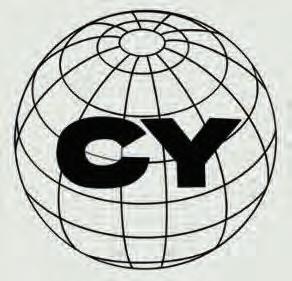
CisternYard Media as a whole has always served to be an outlet for students to come together and get creative; a mission that is upheld throughout its branches: Radio, Video, the literary magazine Miscellany and News. rough my time as Editor-in-Chief I have spent many hours in the CisternYard Media offices and have come to know the other branch leaders and have the honor of calling them friends. Chase Sarkis, Addison Ware and Ethan Cole sat down with me to discuss their experiences with CisternYard Media and why they think it is so important to students at the College of Charleston.
Could you tell us a little bit about yourselves and how you got involved in CYM?
Chase Sarkis (Radio General Manager): My name is Chase Sarkis and I am a senior here at the College of Charleston majoring in Arts Management with a Music Industry concentration! Currently, I am the General Manager of CisternYard Radio! I am originally from a small town in Massachusetts called Canton which is about 35 minutes outside of Boston. I grew up listening to the Yacht Rock radio station, courtesy of my dad, as well as One Direction, Taylor Swift and all the other little girl classics. is experience with music so young helped form my deep connection with written words. If I am not working you will most likely find me reading and still listening to One Direction and Taylor Swift.
Ethan Cole (Video General Manager): My name is Ethan Cole, I am a junior at the college majoring in Classics. I am the General Manager for CisternYard Video. I got involved with CisternYard Media my freshmen year and became an “unpaid intern,” who helped the staff edit and film videos. My first official video for CisternYard Video was the 2022 Halloween PSA.
Can you tell us a bit about your branch of CYM and what your position entails?
CS: In my department I work with Kenz Reichart (Event Management) and James Elliott (Social Media Manager). Together, we meet weekly to discuss event based goals. is means we are always working towards hosting a live music event.
For example last semester we spent a large chunk of time finding a venue, making equipment lists, researching artists, coordinating set times, and placing food orders! My specific position requires delegating tasks and providing support in those tasks. It also requires me communicating with our DJ’s; organizing, training and contract signing). Another large part of my job is overseeing the DJ’s and answering any of their questions.
EC: As Video Manager, my job is to help every member of CisternYard Video achieve their video related goals on a logistical level. I help with planning when videos go out, assigning videos to staff members, pre-production, production and post production.
AW: I would say that the purpose of Miscellany would be to share the voices of undergraduates. Whether that’s through poetry, prose, or visual art, we want to make sure that there is an outlet available to young artists.
Being the Editor-in-Chief of Miscellany has been something different than I initially thought it would entail. e Editor-in-Chief role handles a lot of the creative process. From having final say of what goes in, the order it goes in for the print issue and (my favorite) getting to plan and execute the
Addison Ware (Miscellany Editor-in-Chief): My name is Addison Ware, I am a junior double majoring in Classic and English with a concentration in Creative Writing and I am Miscellany’s Editor-in-Chief! e thing that drew me into working at Miscellany was the historical and cultural impact it’s had on the College of Charleston. It’s been around for almost fifty years and those archives are a treasure trove of undergraduate work. It’s amazing to see how student art has evolved from 1971 to today. Being able to curate a journal, filled with talented young artists, is a legacy I’m proud to be a part of.
overall theme of the launch and issue!
What I like most about this position is the amount of teamwork that is required. I’ve learned so much about being a leader in a creative environment that I’ll carry with me in any career that I have in the future. I rely on my wonderful staff of editors and Managing Editor, Sam Barnhart, to help execute my goals for Miscellany XLVII.
e process of making Miscellany starts with everything submitted becomes anonymous and then our lovely staff of editors, along with myself and the Managing Editor, read and examine everything that gets submitted. We have a detailed evaluation sheet that we work through after we’re finished reading or viewing a piece, then create a total “score” from the evaluations. We leave little notes about the things that stood out to them, so we can have that personal touch to each evaluation, and the things that rate the highest are what we publish! We give each piece an equal opportunity to be discussed in person at the meeting so if there is a champion for a submission, we give them the floor to express their admiration for the art!
In what ways do you think that CYM can foster a sense of community on campus?
CS: I am more of an introverted person and my position at CYM has really pushed me in a lot of ways that I needed. In a lot of ways being involved at CYM immediately places you in a group setting. However, what is so great is that you are there for a reason. No matter what department, you are there because you care about what you are doing and so does everyone else. CYM gives you a space to have a voice in a big way. You can have a radio show, you can submit your art, you can work on sharpening your videography skills. It is a very tangible and accessible way to make waves in your favorite hobbies.
EC: CYM is a fantastic organization that has connections all over campus. We, uniquely, are able to bring students together from all parts of campus. rough CYM, I’ve become friends with the people
who own the robot dog and administrators of the college!
AW: I think the thing about college students’ art is that it’s so precious, and I mean that it is the literal sense of the word. We are in this liminal space of life where we have left our homes and family and started becoming individuals without the weight of the past on our shoulders. e fragility of our identity is exciting! We are discovering the things that we like or dislike, love or hate; we are mailable. Seeing the art that is coming from students is comforting and frightening because we’re all in the same boat right now.
It’s corny, yes, but the art we are making right now is a piece of our precious, young lives. I believe that sharing the artwork itself can foster community.
What has been the most rewarding part of being involved in CYM so far?
CS: e most rewarding part of CYM so far has been getting to know everyone. Specifically, Kenz and James. It has been very rewarding to get closer with them, hear what they want and then do everything we can to make it happen. I think of watching Kenz last semester do the sound/mixing totally by herself at our live event; she did a really great job! I wouldn’t have nearly as much fun if it wasn’t for all the people I do this with.
EC: One of my favorite memories from CYM was at the annual April showers concert in 2022. It took a Herculean effort from everyone involved; from bands, DJs, video and CYM Exec and seeing it all come together was amazing!
AW: e most rewarding part of being involved in CYM and in Miscellany is the overwhelming passion that each and every individual that works here holds. It is an inspiring thing to see in this group of young artists that makes me want to do my job better and create better. I will also say that being able to create physical media that we can hold onto and share with friends and family is very special. e whole notion that print media is dead frightens
me, and I like to think that both Miscellany and e Yard are actively fighting that idea.
Why do you think students should get involved with CYM?
CS: It’s a unique setting where everything is still fun and light-hearted, but you are doing real work. You are making something with a team and it’s something you really care about. It’s a phenomenal opportunity to make friends and make a tangible product pertaining to your interests. I only wish I had known about CYM sooner.
EC: It’s so damn fun! I love working on all different types of creative projects and all of the people in it!
AW: I think people should get involved with CYM because to me––this is what it’s all about! Get creative! Print your opinions, your stories, your poems. Film a movie with buddies or host a radio hour where you only play and discuss e Beatles. ese platforms are genuine and sincere, and the world needs buckets of it right now. Don’t talk yourself out of it; get sincere and join CYM!
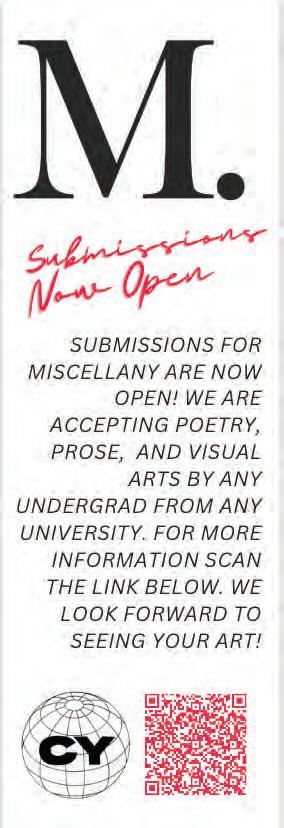


















































By: Jackie Lackey

Who doesn’t love flowers? A flower brightens anyone’s day whether they are a bouquet of roses, a bundle of wildflowers, or a singular sunflower. e aroma is intoxicating, they can’t help but bring a smile to your face. With so many colors, shapes and varieties to fill your home or give as a gift, how do you decide what delicate treasures to pluck? Have you ever considered choosing flowers based on their meanings? Flowers have a whimsically rich history of symbolism in both variety and color that embody traits such as friendship, forgiveness or elegance. Floriography became popular in the mid 18th century in France, as lovers, friends and enemies alike would send floral arrangements to inconspicuously communicate their feelings and desires. So why not bring this tradition back to the 21st century and spice up your next arrangement or gift with some deep-rooted affections!

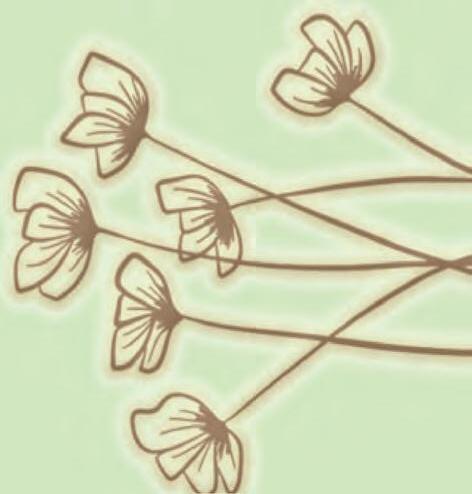










Maybe you are scared to profess your love. Why not let a flower communicate your feelings for you…
-Clover: “You should think of me”
-Lilac: First love
-White Camellia: “You are adorable”
-Gardenia: Secret love
-Red Tulip: Confession of love
-Pink Camellia: Longing for you
-Tulip: Perfect love
-Baby’s Breath: Everlasting love






Want to tell a friend you care about them?

Florally tell them how you view your friendship…
-Alstroemeria: Strength in friendship
-Chrysanthemum: Friendly happiness and love
-Dahlia: Commitment
-Daisy: Loyal love
-Sunflower: Adoration and loyalty
-Zinnia: oughts of absent friends
Want to have a fresh start or a joyful week? Have a reminder or cheer up someone else’s week…
-Daffodils: Hope and new beginnings
-Hydrangeas: Gratitude
-Lilac: Joy of youth
-Peony: Bashful and good fortune





Want to recognize and be reminded of the little things of life? What is worth possessing…
-Bluebell: Humility
-Hibiscus: Delicate beauty
-Lavender: Calmness and serenity
-Jasmine: Grace
-Poppy: Rest
-Wildflowers: Unity
Want to remind yourself or someone else that they are seen and talented? Don’t forget your worth…
- Iris: Faith and trust (and pixie dust)
-Lilies: Sympathy
-Magnolia: Nobility
-Marigold: Creativity
-Orchids: Spirituality and strength
-Poppies: Peace and remembrance
-Violet: Wisdom and humility


Flowers can also hold significant meanings based on their color and variety combination. Roses and carnations are popular flowers found in a vast array of colors that are fit for an unpredictable friend who took up a new hobby or for the start of a new adventure or beginning on the horizon.



















-White: Innocence and new beginnings
-Yellow: Friendship
-Pink: Happiness
-Red: Love
-Dark Crimson: Mourning


-White: Sweet and lovely

-Yellow: Romantic rejection and disappointment
-Pink: “I’ll never forget you”
-Red: “My heart aches for you”
-Purple: “You are so unpredictable”


- White: Innocence and purity
- Yellow: Joy
- Orange: Excitement



- Pink: Friendship, happiness and trust
- Red: Passion and love
- Green: Resilience and health
- Purple: Elegance


e colors of flowers can also portray different messages, not as specific as varieties, but these colors provide an overarching interpretation. Arrangements can hold many vast emotions within their varieties and color choices. So whether it is complex feelings of humility, hope and friendship or you want a message of pure yellow joy, have fun with all the possibilities. have







































e Secret Garden by Frances Hodgson Burnett
Emma by Jane Austen
Malibu Rising by Taylor Jenkins Reid
Into the Wild by Jon Krakauer
From Here to the Great Unknown by Lisa Marie
Presley
Book Lovers by Emily Henry
On the Road by Jack Kerouac









Letters to a Young Poet by Rainer Maria Rilke
Tuck Everlasting by Natalie Babbitt
Call Me By Your Name by Andre Aciman
We are the Ants by Shaun David Hutchinson
Windfall by Jennifer E. Smith
e Miseducation of Cameron Post by Emily M. Danforth
Animal Farm by George Orwell





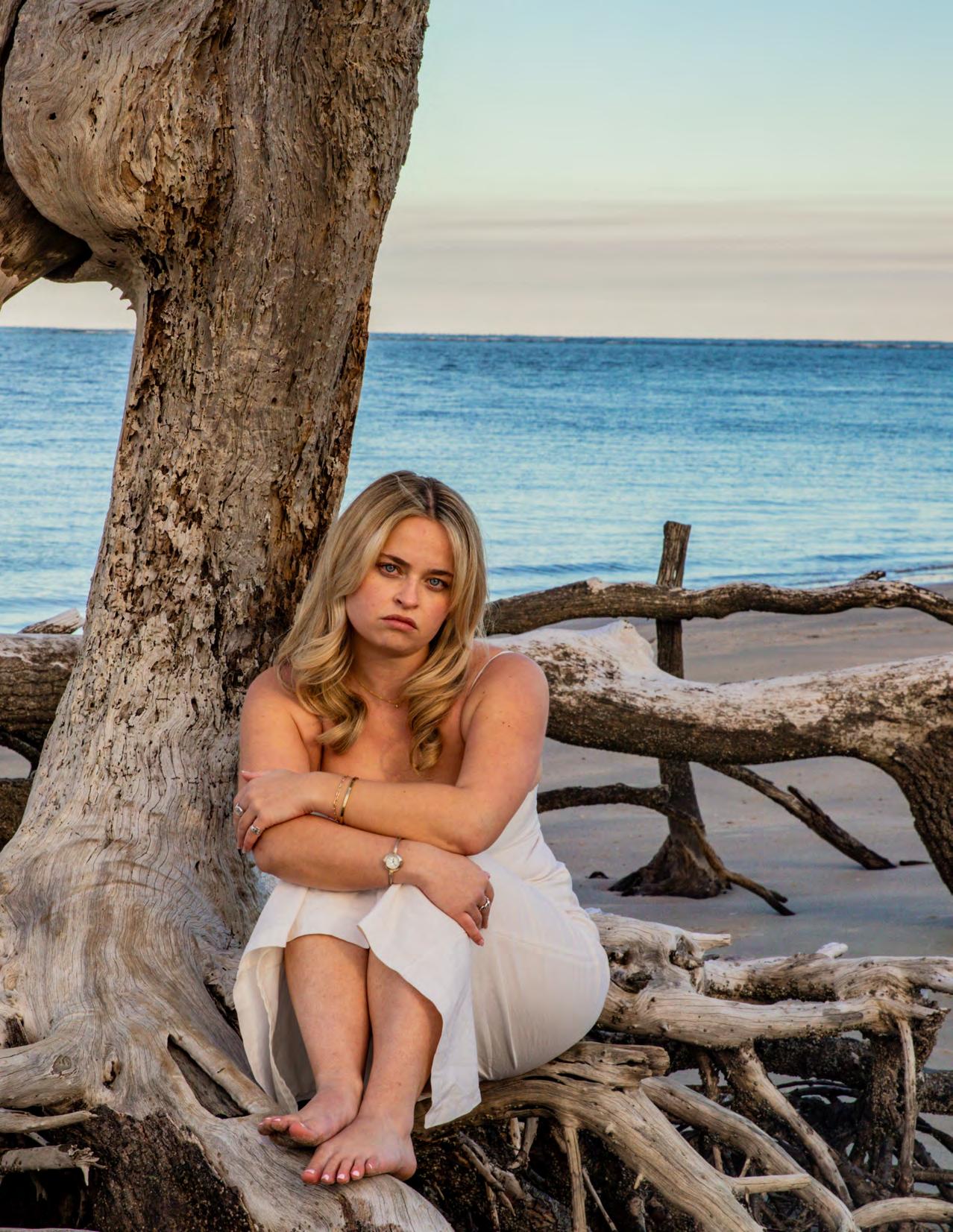
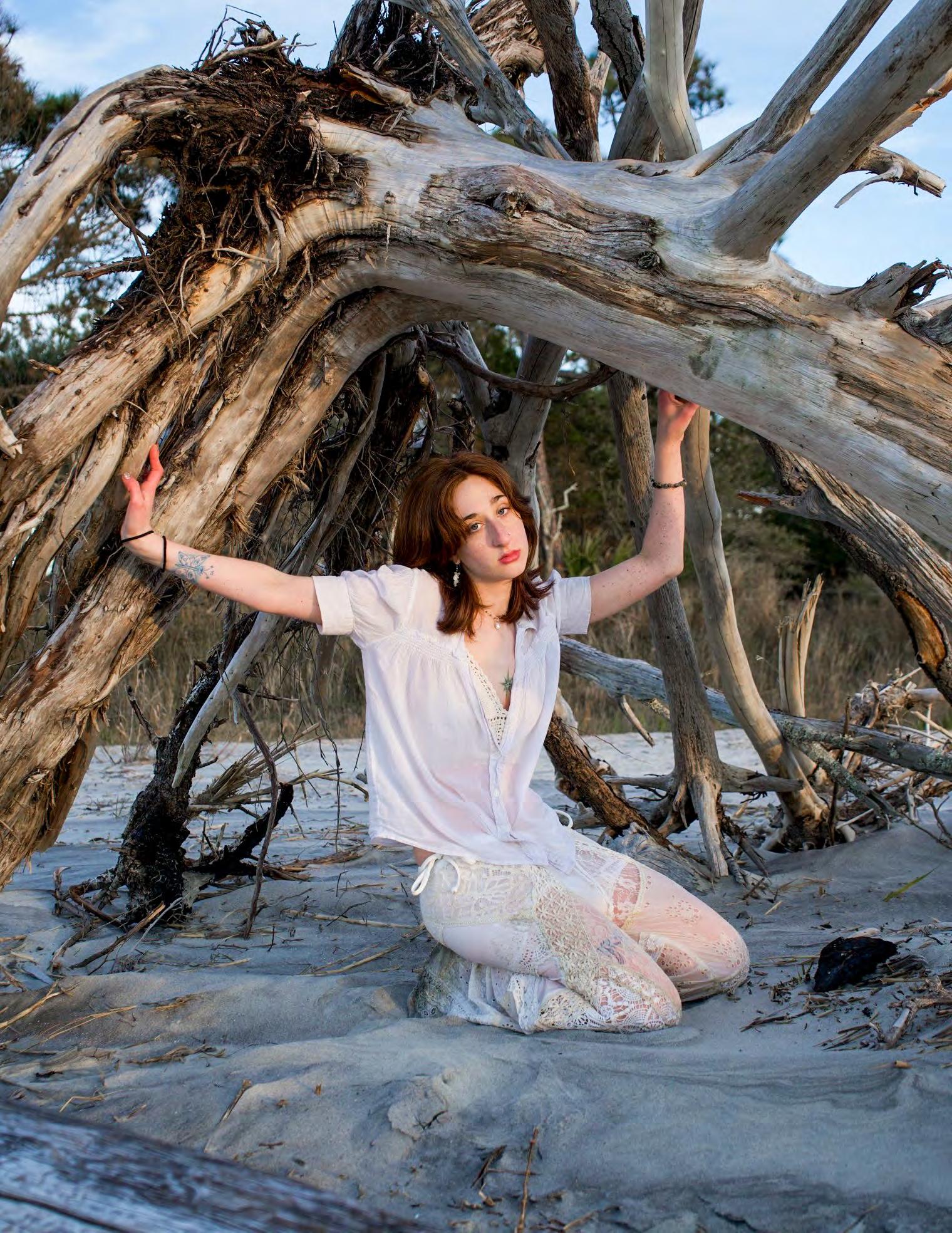




















By: Caz Kopf

A guilty pleasure of mine I have always had and will probably always have is romance. Everything related to romance. Proposals, happily ever afters, bouquets and chocolates. I am a hopeless romantic at heart. But my favorite way to satiate this craving is romance books. I love reading and I love romance; and romance books are the best of both worlds. And I am not the only one whose heart is captured by a swoon worthy relationship on the page. e romance genre has been around for over two thousand years. For over two millennia people have had their hearts broken and put back together following star crossed lovers. Today, the romance genre looks a bit different than it did back then but its roots are still there. To understand where we are today, we must go back and understand how the romance genre has read into our deepest desires to stick around for so long. Perhaps it is the genre’s ability to dig into these wants that makes it endure.
e romance genre goes back all the way to the ancient Greeks from the first century BC to the third century AD. Some romance authors from ancient Greece include Heliodorus, Achilles, Tatius and Longus. A common trope from Greek romance is the pair of lovers being tragically separated by accident or an outside force and later reunited after overcoming dangerous obstacles. is trope would later show up in Medieval romance. In French, this trope was called the “Roman d’aventure” and would dominate the genre to this very day. As for Medieval romances, this same concept was preserved with slight modifications for the time. e stories would include chivalric ro-



mances with brave knights saving a damsel in distress and ending the adventure by going off into the distance happily ever after. Chivalry became an exalted ideal during this time so it was only fitting that the romance heroes had to be as chivalrous as possible to prove worthy of their lover’s feelings. Romance was in the air in France especially. Authors like Chrétien de Troyes and Marie de France wrote popular chivalric romances in the 12th century that later caught on in Spain and Italy in the 13th and 14th centuries.
It is during the Renaissance that what we know of as the romance genre today came into being. English writer William Shakespeare and Italian courtier Baldassare Castiglione were huge contributors to continuing the romance boom in Europe. Shakespeare introduced the trope of romantic tragedy and Castiglione transformed the brave knight of Medieval romance to the respected scholar of the Renaissance. e Renaissance placed importance on new forms of art and higher learning, and the romance genre needed to adapt. And it did adapt, for a while, until about the mid 17th century. Romance was no longer all the rage in France. It was old news. In the mid century, romance was viewed as “unnatural” and “unreasonable” to the people of France. However, England and Germany were still falling in love from one book to the next.
e next wave of love came during the 18th century. e revival of romance was pioneered by Samuel Richardson’s novel, Pamela, published in 1740. is novel took the romance market by storm. e book focused on the hurdles of courtship and morality in relationships. Some believe Richardson based his novel off the works of women writers from the time like Elizabeth Rowe, Susannah Dobson and Eliza




















Haywood. ese women wrote epistolary and manner novels. However, because they were women their work was not recognized until much later. Luckily, Jane Austen got a modicum of popularity when her novels, Pride and Prejudice, Persuasion and Emma were published; but nothing like they are today. e populace was itching for something to sweep them off their feet. Mary Shelley found herself in the growing genre of Gothic romance with her novel Frankenstein. e Brontë sister duo, Charlotte and Emily Brontë, also found success in Gothic romance with their novels Jane Eyre and Wuthering Heights respectively. e 19th century was a time for mixing up an old classic.
e 20th century saw the beginning of serialized romance. E.M. Hull’s e Sheik found great success in this niche market. Hull would later go on to publish her serialized stories into full length novels. Publishing houses Harlequin and Mills & Boon saw an opportunity in the 1950’s and struck while the iron was hot (Harlequin would later go on to buy Mills & Boon in the 1970’s). ese publishers were the first to publish purely romance novels targeted at a female audience. And it worked; with people being drawn to Harlequin especially. Even if you have never heard the name Harlequin before, you definitely know their covers. Harlequin’s novel covers featured the famous Fabio. Everyone knows Fabio. He is the impossibly handsome, ripped, gorgeous haired man always in a sensual embrace with a woman. Ring any bells? ese books are also commonly called “bodice rippers”. ese covers were designed to get the attention of the average woman browsing the shelves, and they did. Fun fact: Fabio was a real person. His name was Fabio Lanzoni and his chest was 48 inches wide. Once he booked his first modeling session with Harlequin, he was set for life. e 1970’s and 1980’s romance novels were also typically historical romance.
At the turn of the century, romance became something different entirely. e 21st century has seen the romance genre open up to people other than just the heterosexual, white woman that was previously the
main demographic for centuries. More than just these type of women are deserving of love, and publishers are finally starting to see that. Black female heroines are getting their chance at a happily ever after in novels from authors like Beverly Jenkins and Talia Hibbert. In this time, relationships outside of the heteronormative were also being explored in novels. Casey McQuiston and T.J. Klune write fantastic queer romances that showed other queer people their love is just as valid. Other authors are mixing genres with romance. A popular subset from fantasy and romance, “romantasy”, is becoming increasingly popular with authors like Sarah J. Maas and Rebecca Yarros. A personal favorite of mine is romantic suspense. Not only do you have the heart warming romance to get sucked into, but you are on the edge of your seat for the evil lurking to destroy the budding love. Authors Catherine Cowles and Jennifer Hartman seem to dominate this subgenre.
Whatever your heart desires, there is a book and author out there for you. Whether you find comfort in the arms of Fabio from the 1980s or you want to push the boundaries of what the romance genre is, there is a story waiting to be read. So go forth and find your own happily ever after.














Red, White and Royal Blue by Casey McQuiston: is book is my roman empire. I am never not thinking of it. is book is a romance between the First son of the United States and the Prince of England. Stick with me now. I know that sounds crazy. But for anyone needing a little escapism from our current world, pick this one up. It is so much more than a fantastical romance. Mental health, identity, familial responsibility and more are explored in this book. Pair these heavy topics with McQuiston’s smart writing and it’s a perfect combination.


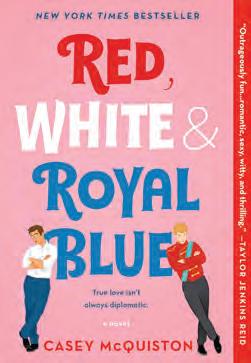

Pride and Prejudice by Jane Austen: Come on now. How could I not put this one on here? It’s a classic for a reason. For anyone who has been living under a rock, let me enlighten you to arguably the best romance ever written. Elizabeth Bennet is an “obstinate, headstrong girl”. When a new neighbor comes to town with his best friend, Mr. Darcy, they immediately butt heads. e two have to overcome both their pride and prejudice (shocking I know) to see what was in front of them the entire time, their love for each other. Entrenched in the strict rules of decorum of the time, Elizabeth is a revolutionary feminist character who pushes boundaries of what it meant to be a proper Regency woman.
Binding 13 by Chloe Walsh: For those of you looking for an emotional, deep romance, this is it. is book follows the shy, quiet Shannon Lynch as she moves to a new high school and becomes entangled with the star rugby player, Johnny Kavanagh. But this book is so much more than that. Shannon comes from an abusive household and Johnny is hiding a secret from everybody so as not to threaten his promising rugby career. ey learn to lean on and open up to each other, ultimately giving the other what they were searching for. Warning: You may need tissues for this one.


Tryst Six Venom by Penelope Douglas: is one is a sort of opposites attract romance. Clay Collins is the straight-laced good girl of Marymount High. She has dreams of going to an Ivy League college and winning prom queen. at is if Olivia Jaeger doesn’t get in the way. But we all know she will. Liv is from the wrong side of the tracks and threatens everything Clay stands for. But the two can’t seem to stay away from each other. is one is a hot and steamy romance that you won’t be able to put down.
It Happened One Summer by Tessa Bailey: is is the perfect summer beach read. Piper Bellinger is an air headed socialite who finds herself in some hot water. Her step dad decides she needs to get back in touch with regular society, so he ships her off to a sea town in Washington to fix up her late father’s old bar. While she’s there, she bumps into the town’s heartthrob, Captain Brendan Taggert. e two, at first, seem to have nothing in common. But as they realize they won’t be able to avoid each other, sparks start to fly.







By: Audrey Palmadessa
Beyoncé has never been welcomed in the world of country music. In 2016, she performed her song “Daddy Lessons” with The Chicks, who had their own controversy within the country music industry; leading to a very mixed response to their performance. Many claimed Beyoncé did not represent what country was (despite the fact she was born and raised in Houston, Texas) and others were simply racist. It is common knowledge that country music is rooted in southern culture and made for predominantly southern audiences. Typically, this audience is more receptive to people that represent their ideals; rich, white, conservative folk. Both The Chicks and Beyoncé, at this time, were not in the good graces of this audience. The Chicks were scandalized for speaking out against the Iraq War, and in 2016, Beyoncé had been vocal about social justice issues, such as the Black Lives Matter movement. For the country world, these stances were surprising and therefore shunned.
Beyoncé created her 2024 album, Cowboy Carter, as a response to the backlash she received in 2016, as well as a general criticism of the discrimination present in country music. She did this by including eleven songs collaborating with other prominent figures in country music, utilizing her songwriting to tell stories about being a southern African American woman. Most notably, she included a cover of The Beatles’ “Blackbird,” with Tanner Adell, Brittney Spencer, Tiera Kennedy and Reyna Roberts, all of whom are fellow Black, female country artists. Paul McCartney wrote “Blackbird” during the Civil Rights Movement, encouraging Black women in the United States to keep fighting for their rights. Beyoncé choosing to cover this song specifically is evidence of her themes throughout the album; this is meant to be an album empowering Black women in spaces they were previously (and in some cases, still are) unwelcome in.
Another song that exemplifies her themes is “American Requiem.” Towards the end of this song, she references how she was alienated from the country community with the lyrics, “They used to say I spoke too country / Then

the rejection came, said I wasn’t country ‘nough / Said I wouldn’t saddle up / If that ain’t country, tell me, what is?” This lyricism encapsulates the impossibility of the expectations of the public. The level of criticism Beyoncé was receiving was so massive and so contradictory that there was no way everybody could be pleased. No matter what she does, she will be criticised. Despite her having grown up in the South, and having her own personal experiences with southern culture and therefore country music, she is unjustly beaten down and discouraged from creating in this sphere. It is clear that racism has a big part in this discouragement and passionate hatred for Beyoncé’s role in country music. When White artists, like Post Malone (who is also featured on this album), switch from one genre to country, they are praised, whereas when Beyoncé does it, people try to shut her down. Seems hypocritical, no?
Beyoncé’s Cowboy Carter is an art piece that holds a consistent theme throughout. Listen to the album, read the lyrics, and really digest what she is saying in these songs. This article could have easily been ten-plus pages, but it is up to you to take this information and use it to your will. This album is a commentary on systemic racism in the music industry and focuses on preserving African American identity within the arts. No other album up for Album of the Year at the Grammy Awards had this level of theme and message, which is exactly why Beyoncé won.


By: Blakesley Rhett
When the word “witch” is mentioned, many people often have a specific image in their head. Perhaps the witch is old, maybe has green skin or is covered in warts. Or perhaps she is beautiful with an air of seduction and danger around her, tempting even the most pious of men. She is often seen with a broom, or a cauldron, perhaps a pointy hat or a series of leather-bound books written in blood. She is known to cackle, to speak with demons, eat babies and cast wicked spells.
To summarize: she is always a woman and always holds a large amount of power.
It is no secret that witches have always intrigued the masses whether through fascination or fear. roughout history and culture witches have been depicted as having abilities to predict the future or alter the natural world through manifestation, magic and spells. Witches became commonly well-known (and feared) due to the depictions of the Salem Witch Trials, the most infamous case of witch hunting in the United States that led to 20 people being executed on the grounds of their involvement in witchcraft and working with the devil.
not the use of these witches promote a feminist or anti-feminist agenda to viewers.
e sitcom Bewitched, which many believe to be one of the first influential media sources that focused on a witch as a main character, is a 1964 show that focused on the main character Samantha, a beautiful and funny protagonist who just so happens to have magical powers. e first episode of the show sees Samantha marry advertising executive, Darrin Stephens who is unaware of her magical nose-twitching abilities. Once Darrin finds out the truth about his bride, he makes Samantha promise to never use her powers again which results in Samantha trying to settle into the role of housewife while being riddled with magical hijinks.
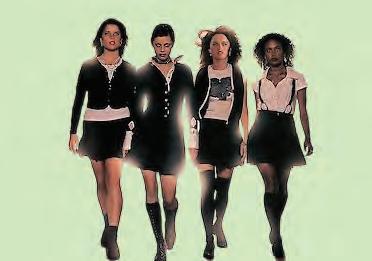
Although the fear of witches living among us no longer terrifies the general public, throughout contemporary media, there appears to have been a steady rise in the infatuation with witches as apparent through many TV shows and movies since the late 1900s. e use of these witches in media by filmmakers and producers has led to much discourse and discussion about whether or
While Samantha herself comes from a line of powerful witches; the fact that she plans to set aside her powers at the will of her husband causes many to believe that Bewitched has underlying tones about the domestication of women. While it was apparent that Samantha had more power than her husband; it alluded to the idea that desirable women who wanted to find a good husband needed to discard their own strength in an attempt to match their husband’s expectations.
As feminist ideas became more apparent in the media, witches continued to thrive on screen into the late 1990s. Sabrina the Teenage Witch continued the lighthearted style of magic as seen in Bewitched, but focused more on the cast of female leads including the titular Sabrina Spell-
men and her two magical aunts. e Spellman women continuously owned their power and often used it to better themselves and the lives of those around them.
As witches in the media continued to prosper, some movies and TV shows set out to depict a more grisly and realistic version of witchcraft. e 1996 horror film, e Craft, was a dark depiction from the playful magical hijinks we had come to know from Samantha and Sabrina. e Craft followed a group of teenage outcasts who partook in powerful and dangerous spells with the power that had been given to them by a mythical being. e film did not shy away from dark topics and featured depictions of death, sexual assault and self-harm. e Craft stood out amongst its fellow witchcraft movies as it culminated in a battle between two witches who were formerly members of the same coven; the power-hungry Nancy and the naturally powerful Sarah. Since its premiere the movie has been widely praised for its feminist-take of centering around a group of realistic teenage girls and having them use their powers to fight back against the men in their lives who have harmed them.
While not quite as terrifying as e Craft, both the 1998 film Practical Magic and the long-running show Charmed depicted darker versions of witchcraft including blood magic and necromancy. In both of these stories a series of powerful witches have to band together and use their magic to defend themselves against other magical beings who wish to bring them harm. Both Practical Magic and Charmed feature a group of close-knit sisters who are at their most powerful when working together; meant to depict that the power women hold is strongest when banding together.
In the 2000s the infatuation with witches in the media still holds strong and has seeped into different genres. Marvel’s character, the Scarlet Witch is often considered to be the most powerful of all the Avengers and has spawned spinoff shows such as Wandavison and Agatha All Along which take inspiration from pagan runes and rituals. Netflix’s e Chilling Adventures of Sabrina takes a darker turn from its predecessor Sabrina the Teenage Witch where the titular character comes from a long line of witches who receive their power from worshiping the devil whom they refer to as “ e Dark Lord”. Even the genre of movie-musicals has featured witchy characters with the adaption of the Broadway musical, Wicked, serving as the origin story for the Wicked Witch of the West.
While the depiction of witches in modern media is often not expressive of real Pagan traditions and practices, it is interesting to see how the witch archetype has been used to promote feminist stories through the vessel of powerful women.


By: Cora Dvorovy
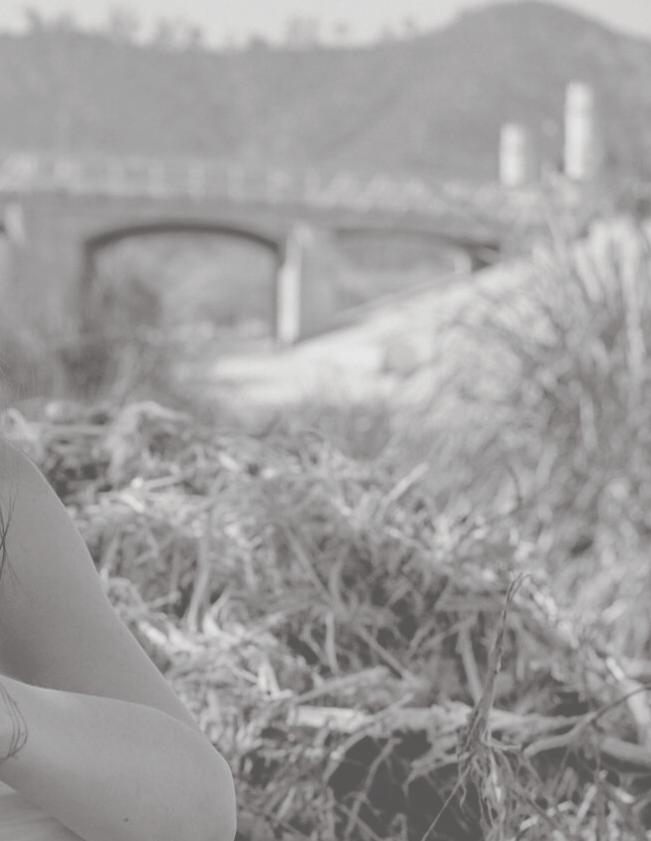

From the sweltering heat of Southern Baptist Florida to the smoky underground clubs of New York City, Ethel Cain’s music is a pilgrimage through the depths of the soul. With her haunting vocals and raw, emotive lyrics, Cain has captivated audiences and critics alike. But her music is more than just a sound; it’s a mark of rebellion, a testament to the power of art to transcend the limitations From the sweltering heat of Southern Baptist Florida to the smoky underground clubs of New York City, Ethel Cain’s music is a pilgrimage through the depths of the soul. With her haunting vocals and raw, emotive lyrics, Cain has captivated audiences and critics alike. But her music is more than just a sound; it’s a mark of rebellion, a testament to the power of art to transcend the limitations of gender, sexuality, and religion.
In this feature, we delve into the Genesis of Ethel Cain’s musical career, discuss the influential layers of her upbringing as a queer artist in the south, witness her Exodus into her current musical identity, and revel in the powerful works she has created so far as we discover the Mark of Ethel Cain. of gender, sexuality, and religion. In this feature, we delve into the Genesis of Ethel Cain’s musical career, discuss the influential layers of her upbringing as a queer artist in the south, witness her Exodus into her current musical identity, and revel in the powerful works she has created so far as we discover the Mark of Ethel Cain.
Since her emergence on the scene in 2019, Ethel Cain has established herself as one to watch. Her unique sound and striking persona have earned her both critical acclaim and a dedicated fan base, who lovingly refer to themselves as the the Daughters of Cain. Her breakout 2021 single, “Crush,” has amassed over 60 million streams to date, on Spotify alone. Single “American Teenager” off her debut album is her most well-known work to date, recently reaching 82 million Spotify streams and making playlists of the likes of former President of the United States, Barack Obama, Taylor Swift, and even President Hsu of the College of Charleston. Following the release of her debut album, Preacher’s Daughter, in the spring of 2022, the star has seen a huge increase in fame and renown, with fans and critics alike declaring it a top album of the year. In just a matter of months, Cain gained more than a million Spotify listeners, and her success has quickly cemented her status as one of the most anticipated voices in music.
Cain has set high precedents and showcased signature marks of her style from the start, with her first two EPs, Carpet Bed and Golden Age, in 2019 demonstrating sophisticated levels of both lyricism and production. Her third EP, Inbred, in 2021 and subsequent singles maintained this momentum into the release of her 2022 album. Haunting melodies and gravely guitar set the tone as Cain grapples with intense themes of religion, identity, family, and sexuality. It is her consistently decisive and impressive artistic choices that have captured the attention of the music industry and set her apart from the very beginnings of her career. One thing is for certain: Ethel Cain has always known who she is.
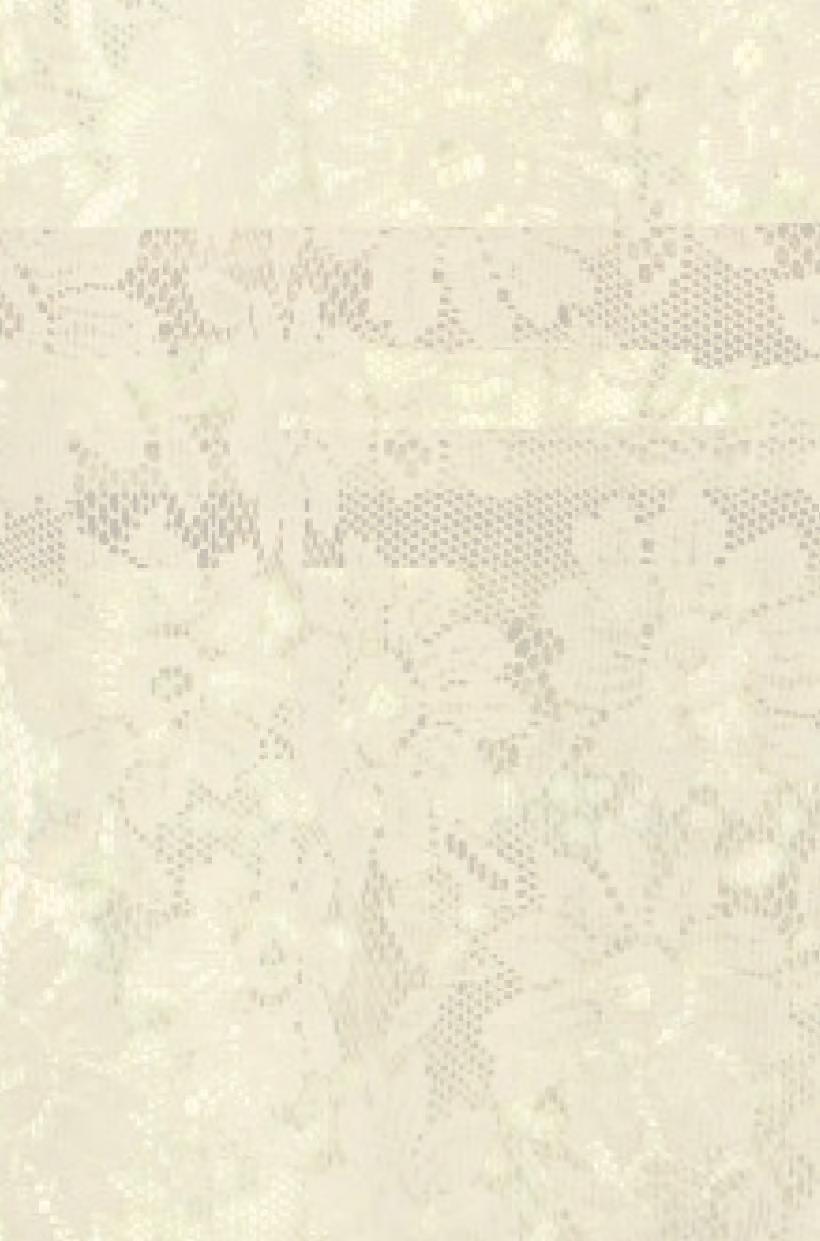
But the same may not be said for the person behind the persona.
Hayden Anhëdonia was born in Perry, Florida - population 1,500, in the heart of the bible belt. A love of gospel music and fear of god were pillars of the Christian home in which she was raised. While she was no “Preacher’s Daughter,” Anhëdonia’s father was a deacon within their congregation, and she started singing with her mother in the church choir when she was five years old. She began piano lessons when she was eight, but wasn’t exposed to much else than her mom’s favored hymns and Gregorian chants, and her father’s classic rock and country until she reached high school. As she collected new idols (Imogen Heap, Karen Carpenter, the Steve Miller Band, above all Florence + the Machine) the musician lifestyle became a dream Anhëdonia used as an escape from the intensity of her sheltered small town life at home. All of these musical influences are prominent in her works as Ethel Cain.
Anhëdonia first shared with her family that she liked boys when she was twelve years old. She was ostracized within her extremely religious community (which she would later reflect on as incredibly “cult-like”) and received rejection from all angles, even from her family. She experienced intentional exclusion and intense judgements, only finding true community in online music fandoms as she got older and gained access to the internet. Anhëdonia was sixteen when she made the decision to leave the church and four years after that, she came out as a trans woman.
As discussed in a recent examination of the effects of Christianity on the LGBTQ+, spiritual abuse can have long-lasting effects on the mental health and state of mind of its survivors. Anhëdonia herself describes the lasting trauma she has retained from the intensities of her upbringing, saying the notion that God is always watching haunts her to this day: “I still have paranoia now. If

I’m changing in my bedroom, I feel like someone’s watching me through my window. I feel like I’m never truly alone.”
Like any true artist, Anhëdonia has taught herself to wield this trauma like an instrument. She has managed to channel her upbringing into her main source of creative inspiration, mining the depths of her religious and family history to craft a deeply personal sound. The music she makes is a telling reflection of the difficulties she has faced in reconciling the teachings of the church with her identity and true self; Anhëdonia often denotes Ethel Cain as her way of “addressing and working through the lingering effects of Christianity.”
Drawing directly upon the language and imagery of the Bible, Anhëdonia explores complex motifs of redemption, faith, and salvation throughout her discography, whilst grappling with feelings of love, pain, self-doubt, hatred, isolation and nostalgia. As far as where Hayden Anhëdonia begins and Ethel Cain ends, it’s still something she’s working out. “Ethel is not a separate character as much as a chunk of my life that I cut off to make her own entity, because it was getting to a point where she was taking me over.”

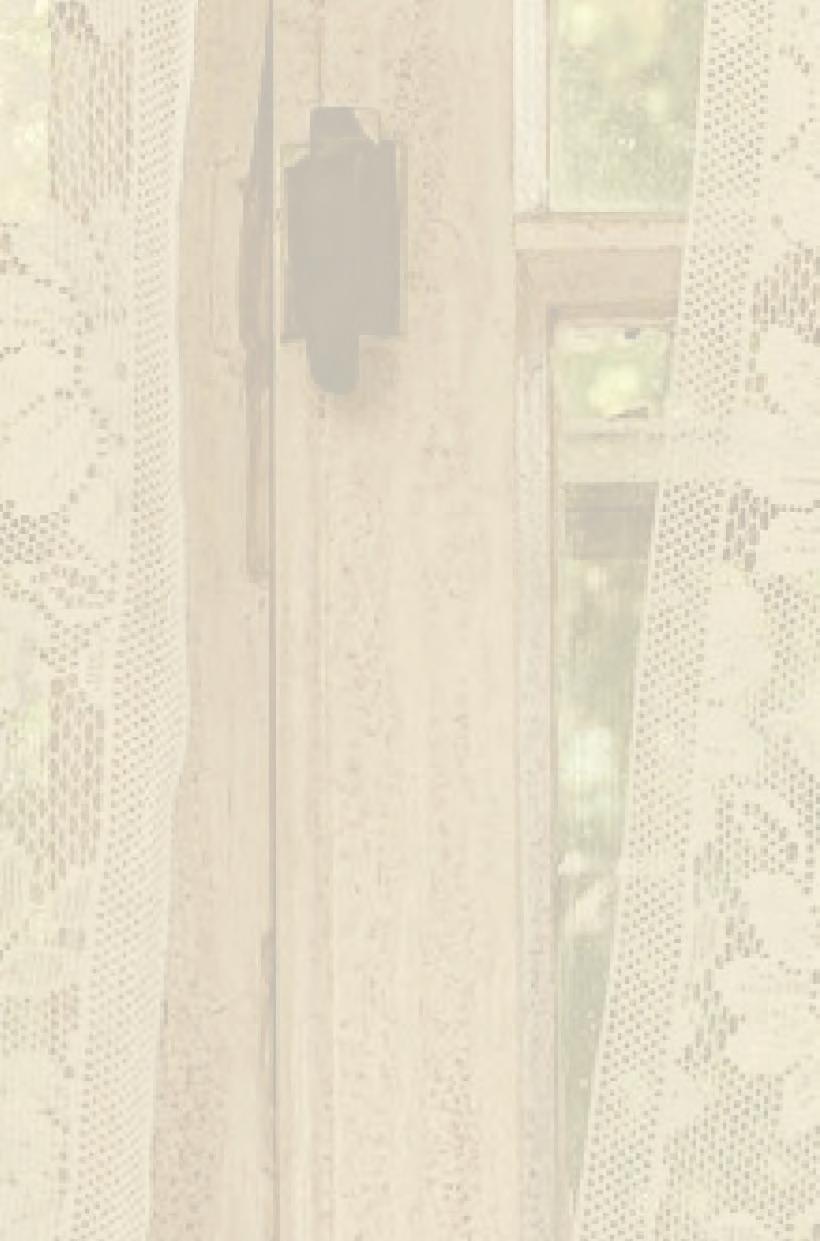
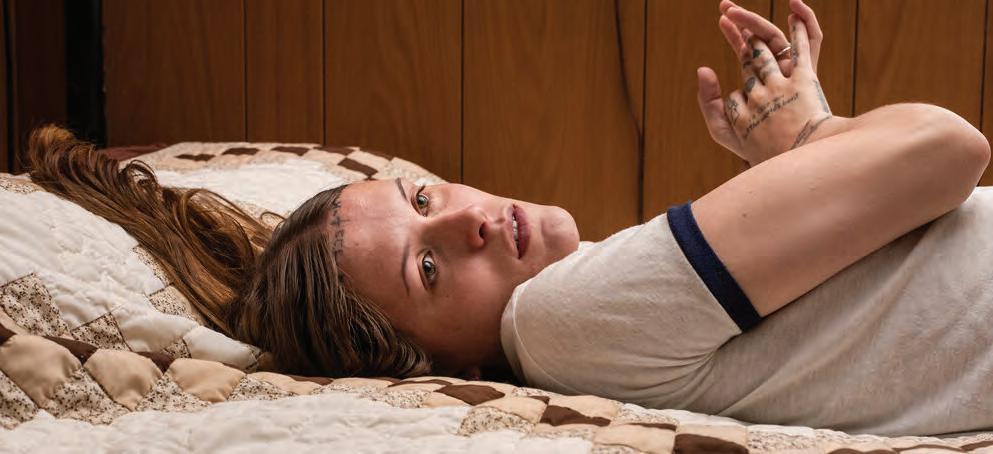
Anhëdonia left home when she was eighteen, moving to Florida on her own and beginning her musical journey as Ethel Cain soon after. She was applying to film school when she began playing with the concept of a full-fledged screenplay chronicling the life of one Ethel Cain, the wife of a corrupt preacher.
While she didn’t have the means to create the film she wanted at the time, she settled for creating the next best thing: the soundtrack. Anhëdonia was nineteen when she opened GarageBand for the first time and brought Preacher’s Daughter to life from her Tallahassee bedroom.
The 13-track project tells the story of a young American girl – a preacher’s daughter raised in the heart of the Christian South now taking steps out into the world on her own. Exploring stories of youth, patriotism, religion, abuse, and even cannibalism, listeners bear witness to the life, loves, and death of Ethel Cain in just over an hour and fifteen minutes.
There is much of Anhëdonia mirrored in Ethel Cain, but Ethel is simultaneously the embodiment of every part of her that she does not want to become. Through this project, Anhëdonia has been able to pluck out particular feelings, thoughts, and aspects of herself that she no longer identifies with and acknowledge them in her music as Ethel Cain, thereby giving her the freedom to let these things go as Hayden Anhëdonia. While we as an audience weren’t formally introduced to Ethel until the release of Preacher’s Daughter, she has evidently been a driving creative force for much of Anhëdonia’s career.
The jump from her self-produced work to her formal releases happened just as quickly for the artist as it appears to from an outside perspective. Her early work garnered a niche following, which included the attention of like-minded artists Nicole Dollanganger and Lil Aaron – the former of whom she would open on tour for in 2019, and the latter of whom would ultimately connect her with the L.A. publishing company, Prescription Songs. Anhëdonia signed a deal with the label in 2019 that allows the artist her very own imprint, Daughters of Cain.

As a trans woman who grew up in the conservative and religious environment of Southern Baptist Florida, Anhëdonia’s experiences have heavily influenced her music, and many of her songs explore the challenges and complexities of navigating these intersecting aspects of her identity. Her lyrics often delve into the struggles of coming to terms with one’s own identity and the ways in which societal and cultural forces can shape and restrict our sense of self.
Anhëdonia’s themes of longing, loss, and nostal-

gia are pronounced by electric guitar riffs, enigmatic production, and ethereal vocals, creating an unforgettable and poignant listening experience that resonates with listeners of many backgrounds.
One of Anhëdonia’s most notable accomplishments has been her ability and desire to connect with her fans on deep and personal levels. Speaking of this with Underground Underdogs in 2019, Anhëdonia said, “When you make music in my vein (emotional, personal, raw, very specific to a generation and group of people with certain life experiences), it really draws others to your story. I’ve met so many people who ‘escaped’ the church or others who have suffered really fucked up situations like assault or abuse, and it really just makes for a very intimate connection between writer and listener.”
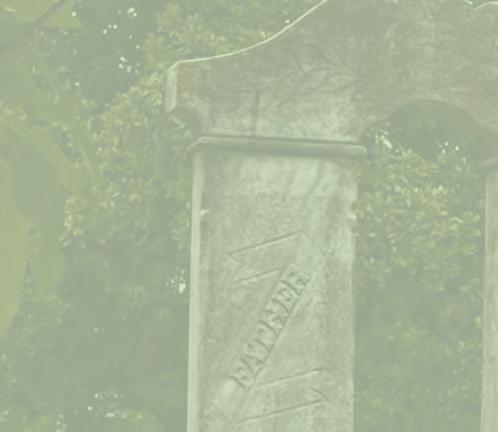

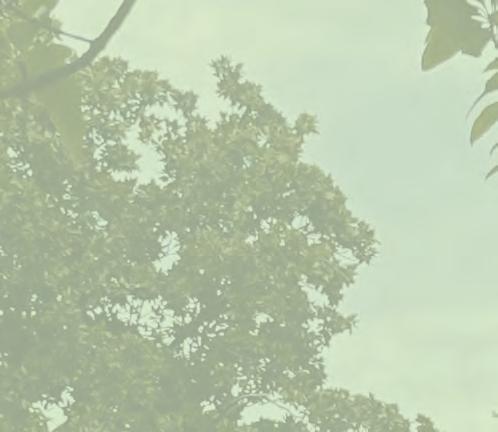
as part of a notable time in the history of American art and music and culture.” In such polarizing and turbulent times, she says, “I just want to leave my mark alongside my peers. We’re all out here just trying to survive and make something meaningful in the meantime.”
Ethel Cain has never been one for comfort, and the latest chapter in her ever-expanding mythology is no exception. Released in January of this year, her second album and latest release, Perverts, is a baptism by fire, steeped in the same blood-soaked intimacy that has defined her work from the beginning. Through even more experimental production and exploration of sound, we witness an artist still starving for touch, for salvation, for the taste of something forbidden and holy all at once.

It’s incredibly powerful to learn of the genesis and development of this artist, whose beginnings resemble that of so many. Music was a dream and an escape that she turned into reality. For Anhëdonia, Florence + the Machine was the ultimate idol of her musical fantasies. The band was there for her in ways no one had ever been, providing her with the community she craved and the inspiration to fuel her musical ideas. And at the end of 2022, I watched Ethel Cain perform a duet alongside Florence Welch for 20,000 people in Denver, Colorado.
Her musical journey is a testament to the power of self- expression and the ability of art to transcend boundaries of society and self to bring people together. And Miss Anhëdonia is just getting started.
Anhëdonia has dedicated her life to her art and is confident she will be creating until she dies. Not only are there more records to come, but she plans to expand on the stories of Ethel Cain in more mediums such as novel and film. What we’ve seen so far is only scratching the surface of this “Preacher’s Daughter.”


Perverts immerses us further into the fever dream, where whispered confessions curl like smoke in the air, and electric guitars moan like jaded ghosts in a rotting chapel. The album is a visceral soundscape, suffocating in the best way like a set of strong, familiar hands at the nape of your neck. While this project is a departure from her past works in many ways, her mark is ever present in her ability to make us feel. To make even the darkest moments feel like communion. If Preacher’s Daughter was about losing faith, Perverts is about what remains afterward – the ruins, the echoes, the quiet and violent ways we cannot help but continue searching for something to believe in.
The Daughters of Cain continue to multiply, devoted as ever. Her live performances are something akin to ritual, where bodies sway in reverence and voices rise in unison like a prayer. I myself have been lucky enough to revel in her presence three times now, each one more memorable and meaningful an experience than the last.
Undoubtedly, Anhëdonia will continue to evolve and experiment with her artistic expression. This author, for one, can‘t wait to see what new projects she will undertake next.

The singer has declared her desire for “Ethel Cain, as a visual and a sound, to be remembered
















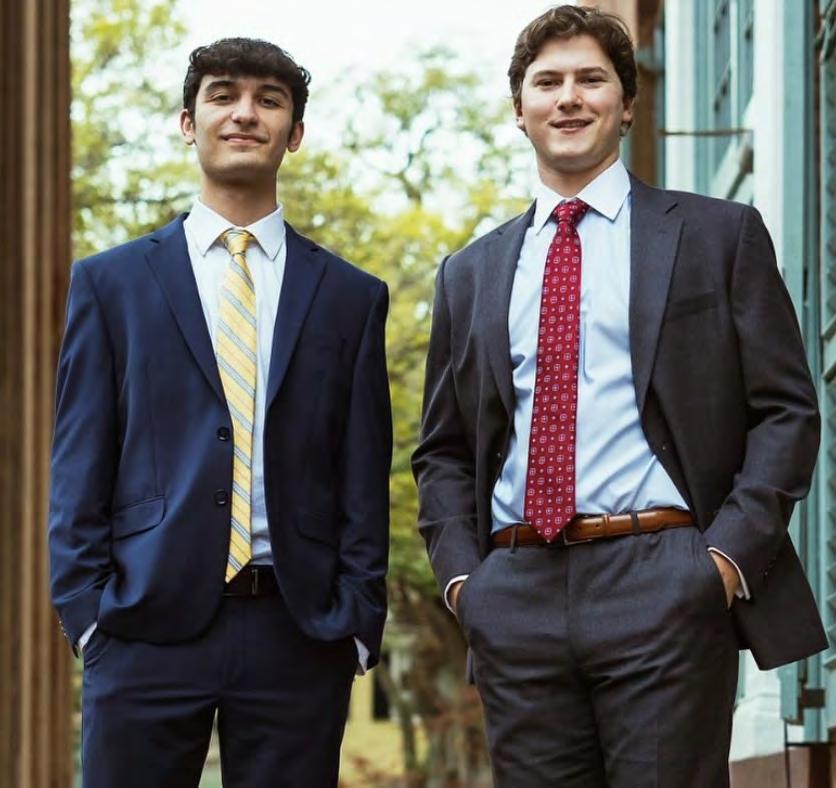
By: Blakesley Rhett
In the College of Charleston’s Spring 2024 election season, junior Adam El Hassan and senior Jake Kreindler were elected as Student Body President and Vice President after a successful campaign that worked to combine multiple student organizations. I came to know El Hassan and Kreindler when they served on the Interfraternity Council (IFC) the same time I was serving on the Panhellenic Council. I sat down with El Hassan and Kreindler to discuss their thoughts on the Student Government Association’s (SGA) plans for the 2024-2025 academic year.
Blakesley Rhett: Thank you for agreeing to this interview. To get started, could you please introduce yourselves and talk a bit about your journey with SGA?
Adam El Hassan: I’m in my third year at the College of Charleston. I was really involved in student government in high school, so I knew I wanted to join when I got to college. And I saw that they were looking to appoint freshman senators; so I applied and got appointed and eventually was a freshman senator that first semester. Then my second semester, I got to be a committee director. And then I was asked to run for Vice President of SGA. And after that, I ended up running for President.
Jake Kreindler: This is my fourth and final year at the College. Unlike President El Hassan, I did not have a student government background before coming to college. But I did join SGA as a freshman and served as a senator that year, but have since taken a hiatus until my election to Vice President. A big part of my college experience was serving on the IFC, where I first served as Vice President and then President. President El Hassan, at the time Vice President for SGA and VP of Public Relations for IFC, heard some rumblings that I was taking an aim at SGA and was able to swoop me under his wing and I ended up running as his Vice President.
BR: Some students note that they are unfamiliar with SGA and what it involves. Could you explain a little about SGA’s mission on campus?
AEH: Of course, SGA is the voice for the students; any type of concern from the students comes to us and it’s our job to communicate that with the College’s administration. We meet monthly with President Hsu and I meet monthly with some of his vice presidents. And in those meetings, I’m bringing the concerns of the students that I hear to him. And then we have the Senate; that’s where we can actually pass bills and resolutions for things that the students might want to see on campus
JK: I want to add something that’s been coming up in our conversations lately; and this why I think it’s so great that you’re doing this interview and getting our voices out there. We’ve noticed that sometimes students here think that we’re inaccessible and some sort of “higher power”, but we’ve really taken aim at making sure that’s not the truth. And if there is one thing that our peers take from this interview is that we are elected to represent them, and that we are one of them. We are not above them in any way.
BR: You both mentioned your journeys with SGA and other organizations; in what ways do you think SGA can foster a sense of community on campus?
AEH: I think something we always talk about is being almost like a middleman between groups. We really want to facilitate conversations between groups who don’t normally come together. And I think the best example I can give of that is through Jake and I’s campaign, we had groups that you would never expect to work together. I mean, you had Muslim Students Association (MSA) and IFC working together on a campaign and it just showed that students will come together for the things that they care about. We’re working really hard to try and keep that going for the rest of the semester; try
and get groups that don’t normally work together to collaborate or just to know more about each other.
BR: And then what do you consider to be your top priorities as Study Body President and Vice President this academic year?
AEH: We have three main pillars we try to follow: building trust, continuous improvements and collaborative teamwork. Those are the things we are trying to stand by through the whole year, diving into each of those pillars and trying to pick different things to try to accomplish those. And I think Jake can probably add some more about that.
JK: My main responsibility as Vice President is overseeing the Senate, so I have been focused on helping things run smoothly and making sure we’re seeing appropriate bills passing through that are a valuable use of our time - something we are really focused on this year. In previous years, senate meetings were every week and we have started doing bi-weekly senate meetings and in those off-weeks filling them in with committee meetings just to increase productivity.
BR: Could you explain what the committees do and what they are?
AEH: Each senator is elected per class and they serve on something called an Initiative Committee. And essentially, they each have to come up with initiatives to accomplish things for either their class or the whole student body. And they have directors who report to us and help guide their senators through those initiatives.
And so this year, we’ve instead put the full focus on initiatives rather than bills and resolutions that tend to be more internal and are completely relevant to the whole student body.
BR: What issues have you guys tackled in your terms so far? And what are you currently working on now, if you can share?
AEH: Jake, I can talk about the outside things then you can talk about the Senate?
JK: Sure.
AEH: All right, so I think the biggest thing, at least through our administration, is we’re looking more at academic topics than most administrations have in the past. So we were able to help push through the Grade Forgiveness Proposal, which has been a ten-year project. And now we’re looking at things like pass/fail, the addition of more than just two minors and expanding the First Year Experience classes to help freshmen and sophomores adapt more to college life.
Can you think of anything else, Jake?
JK: Not external wise. We’ve got a lot of initiatives in the works, but nothing that’s final.
AEH: One example of a smaller initiative, we did the Swipe Away Student Hunger, which raised 816 meal taps for students with food insecurity. And we just work with these different offices on campuses and essentially we’re just facilitating conversations and helping give our voice in different areas.
BR: Can you talk a little more about the Grades Forgiveness Proposal Act? I know this is something that SGA has been working on for a few years. Can you just break down what it is and how you have worked during your term to get it enacted?
AEH: Yeah, so the actual name of the proposal was recently changed. It’s called the Course Grade Redemption Policy, and essentially it allows a student who failed a class to petition to retake the class and
if the petition is accepted, then they can replace the grade. Whereas in the past, if a student were to fail a class, they could retake the class but the two grades would stand.
It’s been being pushed for, like I mentioned, ten years. I started helping President Sydney McGuire with it my freshman year, just looking over things and kind of trying to get informed with the act. And each year since, we kind of hit a different roadblock with getting it enacted. This year, because of the changes on committees, we were able to really push the committee to put it on the floor of the Faculty Senate. When we got to the Faculty Senate, there were a few faculty senators who were pushing back, but the majority stood with SGA and the students and voted for it.
BR: What would you say has been the most rewarding part of being involved in SGA?
AEH: That’s a good question.
JK: For me, it’s been rewarding to meet all different kinds of people from across campus and form bonds with various groups I hadn’t been involved with before. I feel this brings it all together, like what we talked about at the beginning and going back to our pillars; doing collaborative work, it’s so awesome to be so involved all around and get to know different people.
AEH: Definitely. I agree, I think just meeting all these different people. I think for me personally, being the first Middle Eastern, Arab-American Student Body President at the College, I think that was probably the most special thing for me. I know a lot of people who are in multicultural organizations or different groups on campus; they just want to see someone like them in this role for the first time, so that was special.
But just on a bigger note, it’s just like a community, everyone kind of bonded around our camagin and now I feel like we have a good solid support from the students. But it’s so great to see small things, like you do a small initiative and you see the change and you see who it affects on campus; it could be something as small as just adding coffee lids in the dining hall.
All in all, it’s just been great.
BR: If you could give a message to the entire student body, what would you say?
AEH: I have so much to say. I think I would say, don’t be afraid to speak up or advocate for yourself. I think the one thing I see the most is students either don’t know the things they can do to support themselves or they’re too afraid to ask, and I hate that. I want students to be able to come to us and say, “Hey, here’s the problem, how do we fix it or who do we go to?” Because I know the school does genuinely want to support each student in whatever they may need.
JK: One thing I always tell people about the College of Charleston is I think it’s the right size. It’s not too small, it’s not too big and that really opens up many opportunities. The College has endless opportunities for leadership and involvement within different clubs and organizations. So, I would just say to take every opportunity that you can because there are so many offered here.
BR: And then one last question. Looking ahead to the end of the semester, what legacy do you hope to leave behind as Student Body President and Vice President?
AEH: I just want people to look back and say, “They did something good for us.” I feel like in the past, it’s sometimes been, “Oh. That person was
President or that person was Vice President. What did they do?” But I want people to look back and be like, “Okay. Jake and Adam accomplished a lot. They did a lot for the student body.” Let’s set the standard each year that the President and Vice President need to be doing action and attainable things for the students.
It’s not just a role. We’re not just here to be elected and be in the positions and not do anything, but we’re actually gonna do good things and make do on the promises we made.
JK: I don’t think I could have said anything more perfect than that.
BR: Thank you both for joining me. I look forward to seeing what you do in the rest of your term as Student Body President and Vice President.

















how m y feet e in a mile?














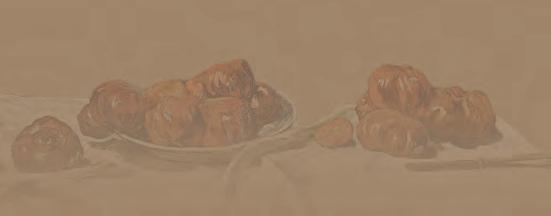
By: Sarah Neal


If there’s one thing I know for sure, it’s that I love tomatoes. I was born loving tomatoes, and I’ll die loving tomatoes. While often misunderstood and underappreciated, these wonderful red (and sometimes green, yellow, or even purple) fruits are incredibly versatile, delicious and brighten up any dish. Want to add a burst of tang to some pasta? Boom, sun-dried tomatoes. Craving a snack that’s healthy and still tastes amazing? Boom, cherry tomatoes. Need a cheap struggle meal because you’re a broke college student like me? Boom, tomato sandwich. ere’s 5280 feet in a mile, and tomatoes can help you remember that, too.
So, in the spirit of celebrating this glorious fruit, let’s talk about five different types of tomatoes and how they can improve your meals and, of course, your life.

Tomatoes, ‘clusters in the form of cherries,’ were first described in a book published in 1623. ese small, round, bite-sized beauties are sweet, tangy and juicy, packing a powerful punch. Cherry tomatoes are wonderful for snacking or adding to salads, but you can also roast them to intensify their sweetness.
Try adding them to different pasta dishes or making a quick sauce by halving them and sautéing in a pan with olive oil, garlic, salt, pepper and fresh Italian herbs.


San Marzano tomatoes originated in the small town of San Marzano sul Sarno around 1823. Long, firm and pointed at the end, these rich and complex tomatoes are the gold standard for authentic Italian sauces, especially Neapolitan pizza sauce and slow-cooked tomato dishes.

Use these precious fruits of the earth in traditional Italian marinara sauce, or if you find yourself with even more time, in a classic Bolognese.



Behold! e Renaissance Man, if he were a tomato. Roma tomatoes are plum tomatoes that developed around 1955 and are believed to have been introduced to the United States by Italian immigrants. ey are mild and slightly tangy, with a more watery and meaty texture. ese delightful creations are excellent for sauces, pastes and roasting, and they work well in fresh dishes, too. ey are also commonly used to make sun-dried tomatoes! We all love Penne alla Vodka, and sun-dried tomatoes make it even better.
If you’re looking for a more classic Southern recipe, Roma tomatoes can also be used to make tomato jam. Now, that recipe is a family secret, but there are plenty of other recipes available online.


Heirloom Tomatoes come in all colors, shapes and sizes, reminding us that nature—and life itself—is beautiful and something to cherish. ese tomatoes share our unique history and can be traced back to ancient Mesopotamian civilizations, where wild tomato species were first domesticated. ey’re soft and delicate with a higher water content and produce an array of deep, rich and complex flavors. Some are sweet, while others have a tangy or smokey flavor.
ese perfect products of nature are best eaten raw to showcase each flavor, so try using them in a garden salad or a Caprese salad. Pair sliced heirloom tomatoes with mozzarella, fresh basil and a pinch of salt, and drizzle with olive oil for a simple side.
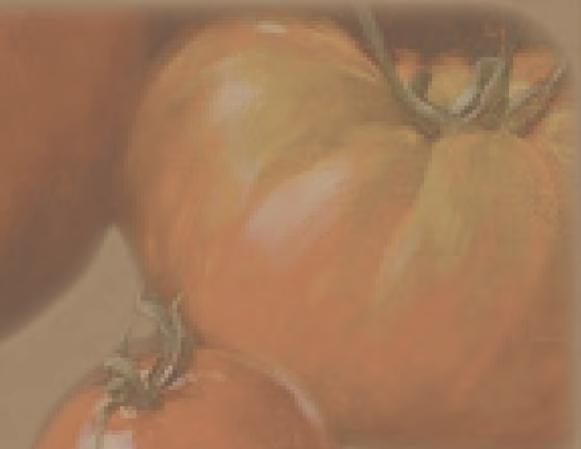

For our grand finale, I present the cream of the crop—my favorite, the aptly named Better Boy Tomato. is large, round hybrid tomato is said to have been developed in the 1940s and 1950s. In 1987, this triumph of modern agriculture set a Guinness World Record when a single plant produced over 340 pounds of tomatoes (wow!). ey’re juicy yet firm, meaning they hold up well when sliced. With perfectly balanced sweetness and acidity, this all-purpose tomato is fantastic for burgers and sandwiches.
Try my childhood favorite: Toasted white bread adorned with Duke’s mayo, salt, pepper, pan-fried bologna and a generous slice of homegrown Better Boy. It just doesn’t get any better than that.
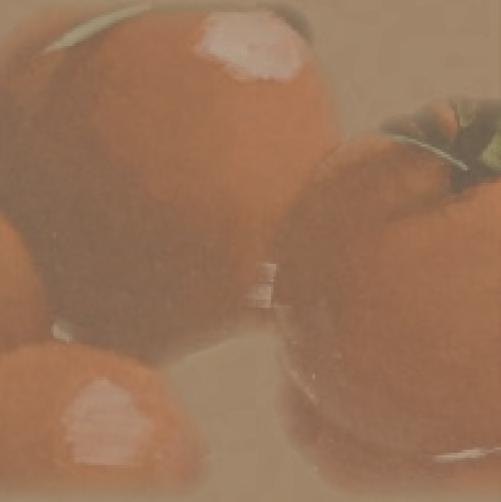


By: Jackie Lackey
ere I was driving through a tunnel of leafy green trees, entranced by the overarching foliage, the dazzling sun rays, the whimsical static in the air, traversing down Maybank highway. e drive, the music, it was as if a flood of joy had rushed over me. I journeyed back in time with every mile. I waved past the boats in Charleston Harbor, rushed over the current of Stono River, and found my way onto Wadmalaw Island. Hidden past endless fields and houses, with the sun protruding through the leaves, I arrived at the Charleston Tea Garden.
is hidden treasure is about 40 minutes away from downtown Charleston. e all-American 127-acre tea garden is home to 25,000 Chinese Camellia plants, the sole producers for the company. As soon as my tires turned onto the dirt road of Louise Avenue a smile never left my face. Immediately, I was flanked by hundreds of bushes lining the way, passing one towering tree after another. e compound consists of the tea factory, where the leaves are turned into tea, the tea shop, the nursery and the garden itself.
Entrance into this little oasis is completely free! e self-guided factory tour has televisions along the walk to help guide the tea connoisseurs through the harvesting, transformation and flavoring processes every fifteen minutes. During harvest, the filter system, wilting machine and oxidation belt are in full swing allowing guests to see the tea making process first hand through glass cases. Hundreds of pounds of tea go through the factory doors every week, as one tea bag uses 32 leaves and can spend several days inside the factory processes.
But how do the leaves actually turn into tea? Surprisingly, all tea comes from one type of plant, the Chinese Camelia. e processes the leaves of the plant go through are what determine their flavor, color and caffeine. Black tea is the strongest, darkest and most caffeinated beverage. Oolong tea is lighter in color and nuttier, while green tea has a fresh, earthy taste and remains a bright green color.
Step one of the tea making process is allowing for the leaves to wither or dry. Black and oolong tea dries for 16-18 hours, while green tea remains stagnant for only
six hours. Step two is the oxidation process, where the tea leaves are exposed to oxygen, which will determine their color and caffeination. Black tea absorbs the oxygen for 50 minutes, which is why it is the strongest and most caffeinated of all the teas. Oolong tea sits for 15 minutes and green tea skips this process all together. Instead of oxidation, green tea is steamed allowing the bright earthy flavors and graceful green color to emerge. While these teas have natural flavors themselves, in order to enrich the tea with raspberry or mint, the leaves are placed in barrels and sprayed with a natural oil where they are tossed around for 20 minutes. Afterwards the tea politely sits for two hours, which allows for the flavoring to seep into the leaves.
Once you have become a full tea sommelier through the factory tour, the next stop is the tea store. When I say tea store, I mean the cutest little tea party you can think of. ey have tea galore here. Tea T-shirts, pots and teacups, tea bags, strainers, tea infused lotions and soaps, tea towels, trays, cups, jellies and that’s not even scratching the service. Walking around the tea store feels like an old fashioned general store where everyone is family. ey stock eight flavorful tea options all year, with added seasonal varieties here and there. e first tea produced, and their staple piece, is the American Classic, made by the owner and certified third-generation tea taster Bill Hall. e most popular flavor, which I can personally attest to its sweet homebound flavor is their Peach tea. e Peach tea was the best peach tea I have had in my life. It is very understated, but with a strong peach flavor that does not try to overpower itself, which is a rarity in tea. e seasonal crowd pleasing favorite would have to go to the Holiday Cinnamon with its rich Christmas in a cup flavor. And don’t worry, if you show up and have absolutely no idea what tea to purchase, they have that covered for you too. Every day they have up to six flavors of either hot or iced tea for tea lovers to try for free. So try one, try them all, and then go back for more!
Outside of the eloquently rustic tea room sits Waddy the frog. A one of a kind, go-easy, tarnished blue amphibian statue that reclines on the front porch bench with a mug of tea. Waddy reminds all of us to take a second and just be. Relax and enjoy a cup of tea with friends and marvel

at the nature all around you.
Just behind Waddy’s shoulder lies the iconic bright red Tea Garden Trolley. e trolley runs every day on the half hour whisking away its residents through the historic gardens, to the greenhouse for a tour around the whole property. e garden is a diverse ecosystem offering coverings for deer, homes for alligators and turtles and nesting grounds for snakes. e trolley, which lasts 40 minutes, is the only attraction on site that costs a small fee of $18 when purchased on site or $16 if purchased ahead of time. During this tour you hear through the surround system the cheerful owner, Bill Hall, explaining the gardens around you, their history and unique practices. eir camellias came from an abandoned farm in North Carolina dating back to the 1860s. ose seedlings were taken by the Lipton Tea Company, who started the farm, and was later purchased by Mr. Hall in the 1980s. e farm prides itself on using only natural methods. No pesticides are used on any of their plants nor is the ground tilled, the weeds are hand plucked by the gardeners and later harvested by hand as well. Mosquitoes are kept at bay by fish in the ponds on the property and natural pest controls such as ladybugs and wasps are used to maintain the plants health.
Also, on the trolley tour you are treated to detailed information on the ecosystems, methods and improvements that the garden heralds. A trolley guide will explain the process of tea from field to cup, stopping along the way for pictures and further delightful details. Looking out of the windows you can almost touch the table top plants, watching their leaves shimmer, as you journey deeper and deeper into the field. e trolley tour stops at the greenhouse, shuffling all of its visitors inside the doors to the computer controlled nursery system. is is where all the new plants are started. Instead of growing from a seed, the tea plants will come from a clipping of an already established plant. is greenhouse also allows for several in-house experiments to be performed on the soil structure, growing methods and pest prevention to hopefully cultivate a brighter future for the garden.
Leaving this sanctuary and climbing back onto our rosy red ride, the next major milestone is the angel tree. is beautiful oak tree takes your breath away. e branches hang low and spread wide, it dominates everything around it reaching high to the clouds. e powerful oak demands attention and welcomes all with open arms. I would not be surprised if this tree was the home of fair-
ies. e tree is the dream of all book lovers and is homage to the playful imaginations of childhood wonder. ose emotions are what makes the angel tree so special. It is said that this tree is the start to many fairy tales and adventures. Every year, dozens of couples say “I do” below its branches surrounded by their closest friends and families. Charleston Tea Garden hosts a plethora of weddings every year, and after visiting I can see why. e magic is evident, love vibrates through every stem, home is formed within these fields and you can feel its pull as soon as you cross the property’s threshold.
ere is never a bad time to visit Charleston Tea Garden, but the experience will be different depending on the season. For instance, the harvest season for tea plants is April through October, but has gone as late as early December, and is the time to see the tea factory processes in full swing. e new growth on the camellia plants in April or May is revered as the “First Flush”, as this season alone creates a unique flavor of tea that avid users or curious ponderers alike should try. On the opposite end of this spectrum, the end of harvest season could be referred to as “Popcorn Season”. Popcorn is what the white sensation of budding flowers that arise usually from October to December are called. As far as one’s eyes can see there are fluffy, soft, pillow like flowers, or popcorn, on every plant. e garden also hosts multiple events throughout the year for families including the Garden Show and Native Plant sales, Easter Fun, Mother’s Day High Tea, Halloween Spooktacular, Christmas Celebrations and much more. e factory itself runs Monday through Friday in season, while the garden is open seven days a week Monday through Saturday 10 a.m. - 4 p.m. and Sundays from 12-4 p.m., with the exception of commercial holidays.
Whether you are looking for a fun weekend activity, a special spot to take visiting family, or out for a quiet cup of tea, Charleston Tea Garden has everything you can imagine and more. As Jon Kennedy, a retired teacher and trolley tour guide says “Life is lived outside, this place offers a rustic home feel, as we try to keep things natural, peaceful, quiet. ere are no cars, traffic or buildings, it’s all outdoors where you can see countless creatures and neat wildlife firsthand.” Charleston Tea Garden is a journey back in time you won’t ever want to come back from, so sit back, relax and have a cup of tea!
By: Blakesley Rhett
When the topic of decriminalizing sex work within the United States is brought up, many people are appalled at the idea and belive that it would curate an environment of danger for all women and children. In contrast to this wide-spread belief, many sex workers and researchers consider decriminalizing sex work to be the most effective way to keep both the workers and the customers safe; a cause that has gained traction in contemporary times due to the series of modern-day Human Rights movements. To gain a better understanding of this mentality we have to unpack the history of sex work in the United States and disccus the differences between legalization and decriminalization.
Prostitution has been somewhat prominent within the United States since the days of the American Revolution where some women would follow the Continental Army and provide sexual services to the soldiers. In the 19th Century prostitution became more apparent in large settlements such as Manhattan, where at one time there were over 200 brothels within the New York borough. At this time, prostitution was considered illegal in New York but was not well enforced by city police who could be easily bribed. Sex work took a new form during the Gold Rush of the late 19th century where mining towns attracted gambling and saloons. It was often the female workers
who ran these wild west brothels and ended up running the towns while the men went on mining expeditions. In the early 1900s, mainly due to an increasing fear of sexually transmitted infections, many members of the general public held anti-prostitution rallies and marches that lead to many brothels being closed and restrictions being placed on prostitution; such as the May Act which prevented prostitutes from working in zoned military locations.

Currently, Nevada is the only state that allows prostitution through the form of regulated brothels, which feature a series of regulations the workers must follow. ere are 19 legal brothels that are open to the public in Nevada, many of them titled as “ranches” (a nod to the original Chicken Ranch in Texas, that when open during the Great Depression; accepted chickens as a form of payment for services). ese brothels provide a safe space for sex workers to accept clients and are heavily monitored by the state and county police to make sure all rules are being followed such as requiring the workers to have specific licenses, always use a physical barrier and not to disclose prices outside of potential client consultations. ese brothels are the only legalized form of prostitution within the United States; meaning that even if a worker offers the same services, at the same price and uses the same form
of protection outside of the brothel as they would within the walls, they could face criminal charges.
e movement to decriminalize sex work is different from the act of legalizing sex work. Legalizing sex work would remove the criminal penalties of buying and selling sexual acts and would turn sex work into a regulated business that would have restrictions placed upon by the nation, state or county. Decriminalizing sex work would remove the criminal penalities of sex work without any regulations surrounding it.
Sex workers and researchers alike believe that decriminalizing sex work is the only way to make the business safer. ey cite that decriminalization would stop the profiling and brutality that sex workers face (most notably POC and LGBTQIA+ workers) often at the hands of police. is fear of police brutality and mass incarceration often leads to sex workers performing their jobs in areas that are not surveyed by police, putting them in danger. Decriminalization would also deter violence against sex workers as in the current system, many sex workers’ who face sexual assault are not believed due to their profession, if decriminalization was put into place the stigma against sex workers would decrease leading them to be more believed by law officials. e act of decriminalizing sex work is suggested to lead to an increase in better public health and help to stop the spread of sexually transmitted diseases. It would also allow sex workers to file as independent contractors which would allow them to set their own working hours and prices, work against companies such as Paypal and Venmo who often boot many sex workers off their platforms and allow for the workers to stabilize their income and livelihoods.
ere has been success in other countries in decriminalizing sex work such as in New
Zeland, who in 2003 passed the Prostitution Reform Act. In a study conducted in 2008 New Zealand revealed that the act has not led to an increase in prostitution or sex trafficking but that there had been a decrease in violent acts against sex workers.
Other countries have attempted to address the needs of sex workers in partial measures, with the most common being the Nordic Model. Areas that have currently adopted the Nordic Model include: Sweden, Finland, Denmark and the state of Maine. In this model those providing services of prostitution are decriminalized, but those purchasing these services can still face criminal penalties. is model, while meant to serve as a compromise between criminalization and full decriminalization, only harms sex workers as within this model the workers will often move to more seedy areas in an attempt to protect the anonymity of their clients, putting the workers themselves in more danger.
With the movement to decriminalize sex work growing larger within the United States, it is becoming a prominent topic amongst politicians, with many current democrats such as Vice President Kamala Harris and New York Representaive Alexandria Ocasio-Cortez showcasing their support for the movement.
While the future is uncertain, there is no denying that the movement that calls to decriminalize sex work is growing more and more every year. For now, it is important for everyone to educate themselves on these topics of decriminalization and remember that, “Sex work is valid work.”
By: Sia Sharma
Leonardo da Vinci. Galileo. Michelangelo. When you hear the term “Renaissance man”, these are likely some of the names that come to mind. Da Vinci was an artist, inventor and scientist. Galileo was an astronomer, mathematician, philosopher and physicist. Michaelangelo was a sculptor, architect, poet, painter and engineer. All three of these men–and all others who fall under the category of the Renaissance man–were masters of their elds, all of their elds.
e other thing they have in common, though, is that they’re all old. I’m talking lived-in-the-1500s old. It makes sense; they were all born during the Renaissance, hence the term Renaissance man. But that term doesn’t strictly apply to those born during that era, even though that’s where a majority of them come from; hypothetically, anyone from any era could be a Renaissance man. If that’s true, I want you to think about a modern day Renaissance man (or woman or person). It’s a little bit harder to identify them in the modern era, isn’t it? Maybe you thought of an actor who sometimes also directs or writes the script. Maybe you thought of Elon Musk, which is…well, that’s a whole other topic that we won’t get into right now. e point is, you most likely thought of someone, but not with the same con dence and certainty that you would for people like da Vinci and Michelangelo. Why is that? What about the modern era makes it so hard for a Renaissance man to truly exist?
To begin, a Renaissance man, by de nition, is
someone who excels at many di erent subjects. ey do not just stick with one eld. ey explore and branch out, trying to master as many things as they can while they’re alive. at is why people like da Vinci seem so impressive to us; obviously he was incredibly talented in his art, but he also tried virtually every cra and excelled at it. From dissecting corpses to conceptually inventing the helicopter, da Vinci was a Jack of all trades AND a master of all. We can’t even really comprehend that today because we are not used to having the creative freedom to explore our passions. In today’s world, everyone is told early on that they must pick a subsection of a eld to specialize in. ere are too many people trying to get the job you want, so you have to be the best at that one speci c thing. e problem with wanting to be the best in an incredibly specialized eld is that it doesn’t really give you the time, freedom, or opportunity to try anything else. You spend so much of your time focused on your specialization that there isn’t really room to explore your other interests or passions. You’ve been pigeon-holed into a role, and now you’re trapped. at’s not to say people do not change their career paths and branch out; they do, obviously, but it is not as easy to do that as it was in the Renaissance. ere is a lot that factors into the decision to change jobs–salary, location, skills, etc. Especially for people with families to take care of, changing careers on a whim is not always possible. It’s just too risky.
Additionally, so many jobs now have some kind of intensive training or schooling that
you have to complete before even being considered for the job. at time commitment alone is enough to deter people from speci c elds. ink about Galileo. at man didn’t even complete his degree, yet he was able to be successful in his many elds. Now, though, if you want to be a modern-day Galileo, you have to nish high school, get into college, get a degree, apply to graduate schools, get into graduate school, get a graduate degree, nd a job in the current market and then do the whole thing over because all of that was just for one subject and Galileo excelled at four. Not to mention the crushing amount of debt you’d probably be in a er all that college education. e point is, being a Renaissance man today is not easy. It obviously wasn’t easy back then either, but there were de nitely less barriers and hoops to jump through to earn that title.

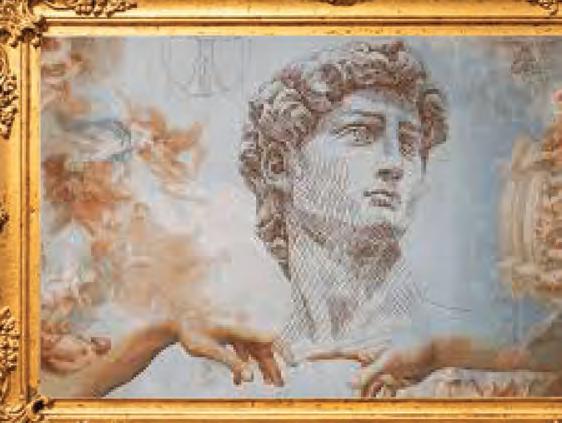

them e ciently and accurately, would give us a little more free time to pursue some of our passions. I am, of course, talking about AI. For some reason, the developers of AI have focused on creating AI that specializes in art, music, and cinema, all of which are things that are fundamentally human. In some version of the future, though, AI could be used for mindless tasks, leaving humans to do what humans do best–create. We could revert back to the idea of the Renaissance man, at least in some way. Obviously, this is entirely dependent on the developers of AI using it for the right reasons, which, if history has
taught us anything, rarely ever happens.
e question now is if we can ever have a true Renaissance man again. e current career landscape makes that hard, but what if there was a developing technology that could take care of chores and mundane tasks, things that do not require human creativity, soul, or spirit. ings that, if we had a way to complete
e Renaissance man, in his traditional form, is dead. He cannot exist in the modern era, not really, but it would be nice to hope that, one day, the idea of the Renaissance man will return. It is less about the acclaim or accomplishment one gets from being deemed a Renaissance man and more about the way humans were meant to live. We, as humans, were never meant to be stuck behind a desk, working the same 9-5 for forty years until there’s nally enough money to retire. We
were supposed to be able to explore, learn, paint, invent, draw, sing–do what makes us human. We are not robots, but, ironically, it sometimes feels like we’re becoming them. AI progresses more and more by the second, learning to paint, sing and direct entire movies at an alarming rate, while humans spend so much time just trying to a ord to live that we do not even try to engage in those activities anymore. Maybe one day, though, humans will be able to reclaim art and earn back the title of the Renaissance man.











“I
thought, I n d to reinvent myself. I want every day of life to be wonderful, fascinating, interesting, creative. And what am I gonna do to make that happen?”
— Karen A en
roughout history, reinvention is one of the most recurring themes. Renaissance artists changed the way art is made and perceived through new techniques. Henry Ford’s assembly line altered the world’s means of production forever. e printing press adapted the way literature and news was distributed. Modern day pop stars and celebrities change their image with every new project to modify their public persona. ere are thousands upon thousands of examples on every size scale; all stemming from ideas of one person and the reinvention of themselves.
Before coming to college, I had a very routined life. I lived in the same house my whole life and kept the same best friends from kindergarten all the way until present day. I went to the same coffee shops in the morning, the same delis for lunch and went to the same houses for parties on the weekends. It was a comfortable, happy and stable life. I loved it and dreaded the day that it would all be flipped upside down after I traveled to a different part of the country for college. I didn’t want this routine to change, let alone myself and who I am as a person.
Once I arrived to College of Charleston, the longing for my old life still lingered; but the difference was I wasn’t going to let it continue. I’m sure all college freshmen have received the age-old advice of “Say ‘yes’ to everything your first semester,” and while I can’t say I took that advice to heart when I first arrived, after my first two weeks, I knew I had to.
My first few weeks, and I’m sure so many other freshman’s first few weeks, were full of nostalgia, missing home, early bedtimes and the urge to book a flight home. I felt trapped in the small dorm and twin XL bed I spent so much time in. It came to a point where I had a constant feeling of being lost and confused. I knew it wasn’t beneficial and it culminated until I knew I wasn’t going to allow myself to be the same person and have the same life I did at home.
I broadened my perspective on friendships, I put myself out there socially in ways I wouldn’t have months prior, I engaged myself in classes I thought I had no interest in. With the new people I met and began to love so dearly, I was able to hear opinions on new issues and dilemmas, no matter how broad the scale, and develop an understanding of lives outside of mine – lives once unknown to me and the new life I am beginning. Even small things, like eating foods I normally wouldn’t, made me realize the
importance of change- something I used to be afraid of. Who knew a northerner could like fried okra so much?
Every day, I was learning more, whether it be in the classes I was taking and suddenly interested in, or in my dorm room, watching TV with people who have never heard of my hometown, who were strangers to me mere weeks prior. While this growing period (a period I am honestly still in) was tough, uncomfortable and awkward at times, it bene tted me by ways of allowing me to become the person I am, and the person I am striving to be.
e ability to let myself be di erent than the person I was for 18 years, while still keeping the traits about myself and who I am as a person staying the same, was di cult. At times, I still nd myself missing the routine and structure I had before. Sometimes when I wake up I crave the co ee from my hometown cafe, or the sandwiches from the deli I spent far too much money at. But the di erence is, I know otherwise now. I know what life is like outside of the bubble I contained myself in for so long.


Coming to college is scary. No one is doubting that, and if you are, that is an impres- sive mindset to have – one that so many incoming freshmen, and even current college students, are jeal- ous of. As prepared as you may seem and think you are, the dread and anxiety surrounding uprooting your whole life is unpredictable and frankly terrifying. e most comfort- ing fact about the change, however, is that you know that deep down in- side you, you will remain, or at least try to remain, your truest self. One can hope that the best parts of themselves stay permanent, and the aspects of yourself and your life you appreciate a little less are malleable.
e amazing thing about reinvention is that you are still able to carry the lessons and nostalgic comfort of old routines. Renaissance artists used the same skills as their predecessors and drew inspiration from previous artwork, yet they managed to make it their own and expand their creative output. e assembly line allowed for the same dedication and cra put into manufacturing, but instead of the labor intensiveness coming from one person, it came from dozens, allowing for easier production. e printing press didn’t diminish the writer’s hard work and creativity; it just let this expressiveness and vision be more widely distributed. Today, the pop stars and musicians we know and love don’t necessarily change their cra , but rather, they alter it to better t who they are now.
e deconstruction of oneself doesn’t have to be negative. O entimes, it rarely is. Reinvention is de ned as “the action or process through which something is changed so much that it appears to be entirely new,” and while to some extent I agree, I think the words “entirely new” are misleading. Reinvention isn’t the formation of a new thing. Reinvention is the alteration of a once beautiful thing to become something else. Something just as beautiful.
By: Josie Elia
e dust has settled, she’s the sole survivor; her shirts ripped but you can only just slightly see the lace of her bra and she’s just escaped the killer. Sound familiar? She’s the final girl; a common character trope within horror movies, especially the slasher sub-genre, coined by Carol J Clover in her 1992 book Men, Women, and Chainsaws: Gender in the Modern Horror Film. e final girl is usually a shy, unassuming girl in the beginning of the movie, but by the end she has reversed the roles of killer/victim and avenges her friends. e first example of this in the United States is Sally Hardesty in the 1974 cult classic Texas Chainsaw Massacre. is character incited a slasher hit, and in the following years popular movies like Halloween, Alien, Carrie and Friday the 13th were produced, all conforming to the final girl trope. But why did this trope resonate so hard with Americans?
e introduction of the final girl in America marked a decade of quickly evolving women’s rights. roughout the 1970s women gained access to freedoms they did not have before like the Equal Credit and Opportunity Act , Roe v Wade, Title IX and with the release of Texas Chainsaw Massacre they could also fight back and win against masked on screen attackers. A defining characteristic of the final girl is that she reverses the roles between killer and victim, defying all odds, symbolizing the changing political landscape of the time period. is trait of the final girl represents women finally winning financial and bodily independence.
is killed in an overly brutal way. A notable example is the characters Pam and her boyfriend Kirk from Texas Chainsaw Massacre. ey teasingly discuss skinny dipping together at a swimming hole which inevitably leads them to being horrifically murdered by the killer, Leatherface. Pam’s death is especially brutal compared to Kirk’s, punishing her for her sexuality, literally hanging her on a meat hook to represent her as a superficial sexual character; unlike Sally, who has a boyfriend, but for the majority of the film stays and protects her disabled brother. To be a final girl and survive until the end you must be “pure”, through this the film warns its audience against sex and demonstrates female sexuality as something to be punished for.

To be seen as “pure” enough to survive, the final girl must also abstain from drinking and drugs.
A few years before the first final girls hit theatres, President Richard Nixon boldly declared the “War on Drugs”. Inciting fear and hate throughout the country, he associated weed and cocaine with minority communities with the intention to disrupt them. is declaration was reflected in the trope, condemning the final girl’s friends and family to a brutal death. For example, in the 2003 revival film, the first victim of Leatherface was Kemper Sterling, a character who was illegally smuggling marijuana through the Mexican border. Kemper and all of his friends are murdered, except the final girl, Andy, who did not condone or partake in the drugs.
While this trope reflects progressing women’s rights within America, even a final girl can’t escape underlying fears and misogyny. Another mark of the final girl is that she notably refuses sex, or clearly isn’t as sexualized as the other characters; often iIlluminating her over-sexualized best friend who
To survive in the 1970s, you must be attractive without being overtly sexual, cannot do drugs, be slightly outcast and most importantly, fight back. e final girl represents unprecedented times within American society. As such, she continues to change and make changes within the genre and makes us all wonder what she’ll do next?


@cisternyardradio


Th oughf e - Ethel Cain
Mythological Beauty - Big Thief
Thoughts About You - R ulus Wolf
Backwoods - Gigi P ez
Half Awake - Brave B y
I Love You, H eybe - Fath J n Misty
Down the Line - Bea Fossils
Preocc ied - Mac D co
The Sweetest Thing - C a Obsc a
Rude Boy - Mr Twin Sist Pr ises Brok - Soul Asly
Clay Pige s - Mi ael C a Just Like H ey - The Jesus d M y Chain
Talking Backw ds - Real Estate Windows - Sug C dy Mo tain
Astrov - Mt. Joy
Si ra Vista - Ri y Mit & the Coal Min s
Lucky - ATTA Boy


Until next time... follow us on instagram @cisternyardmagazine